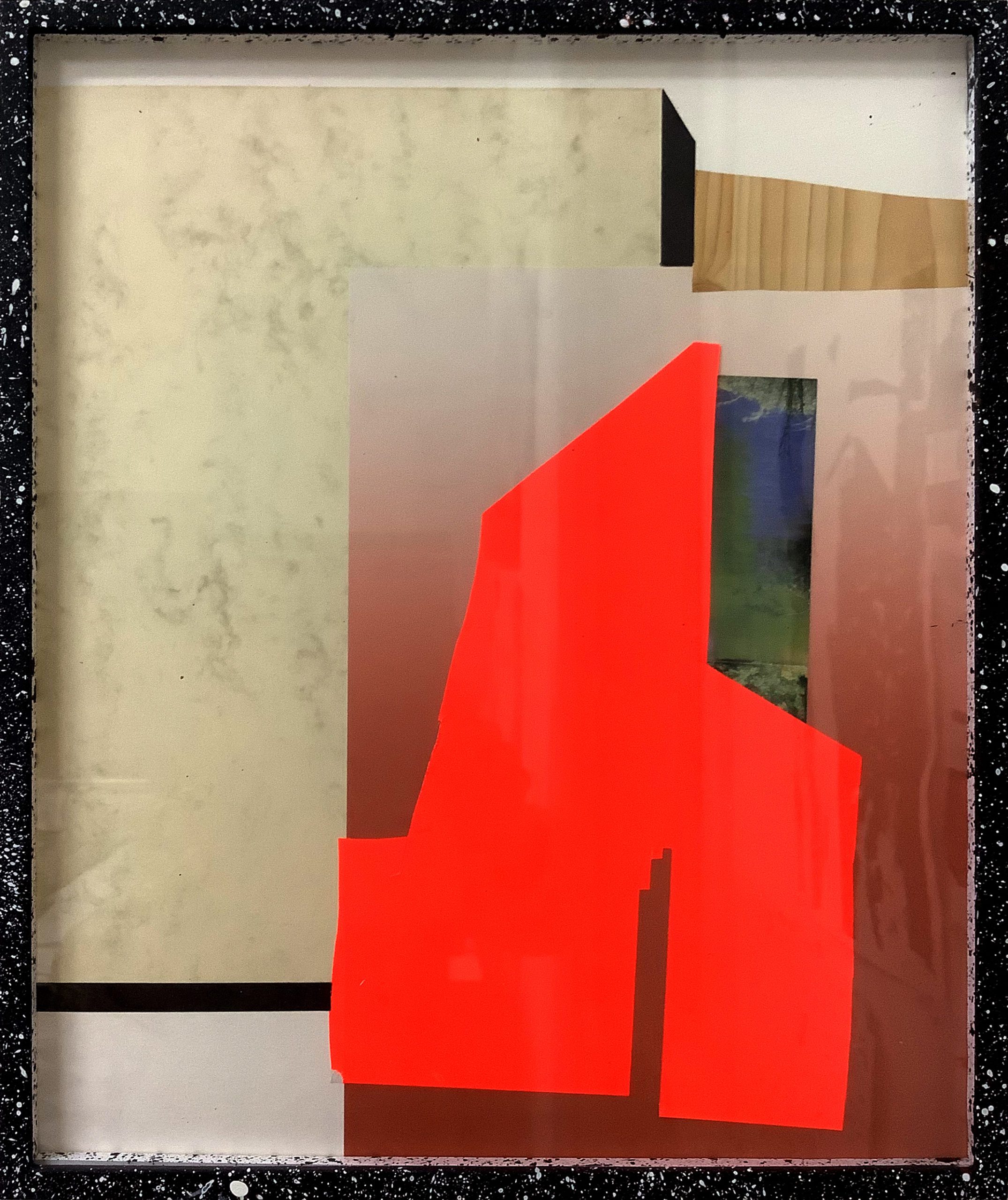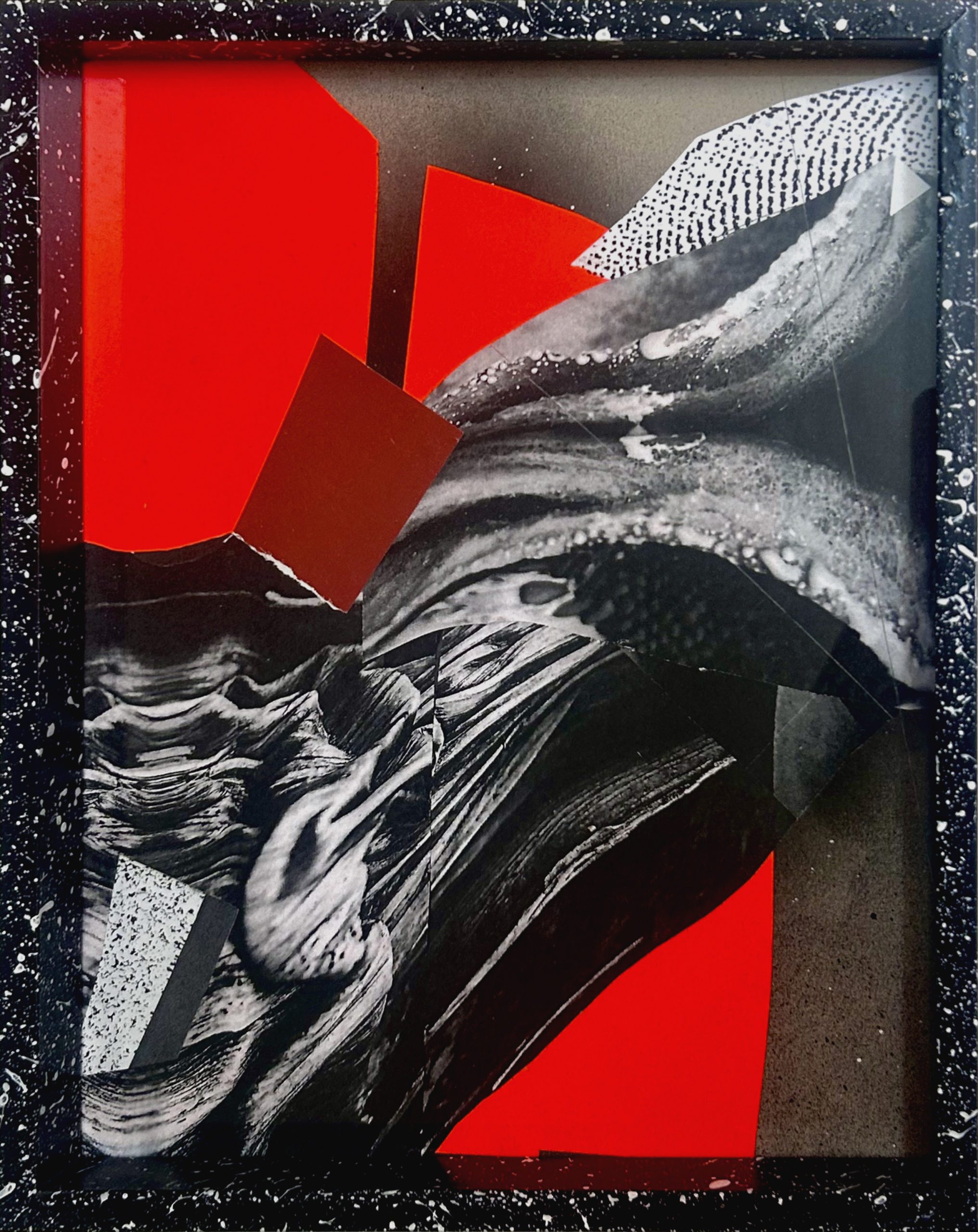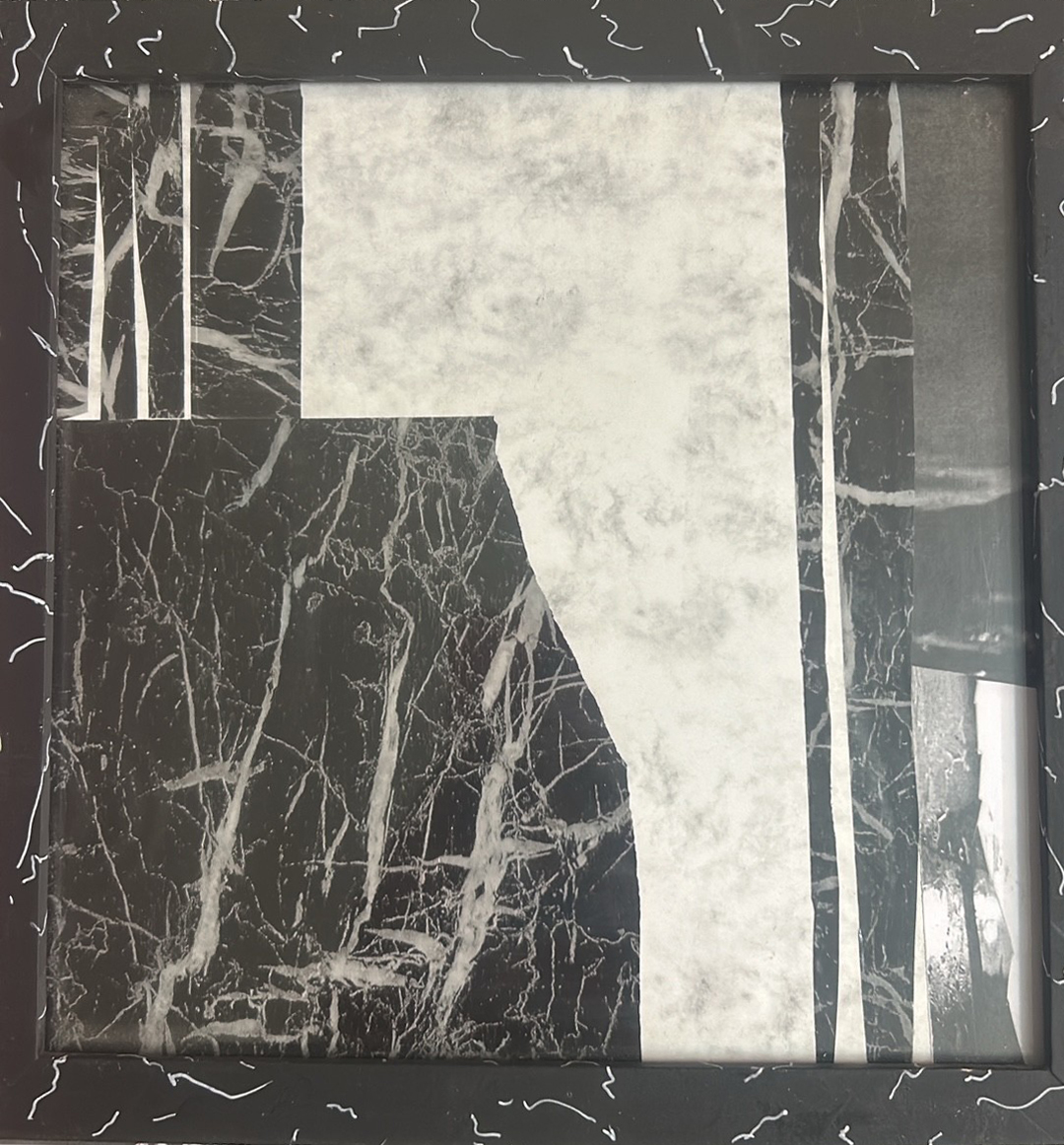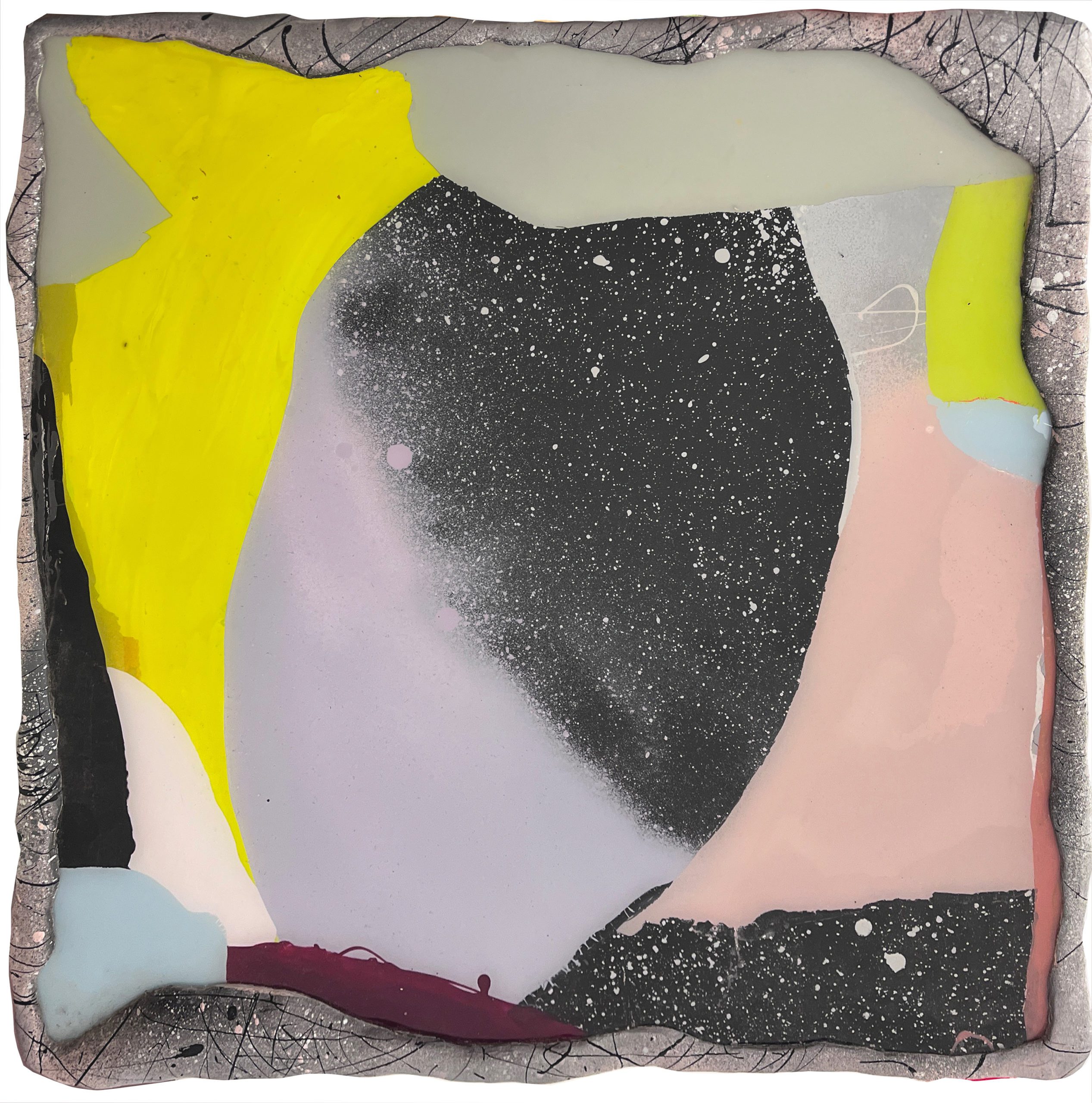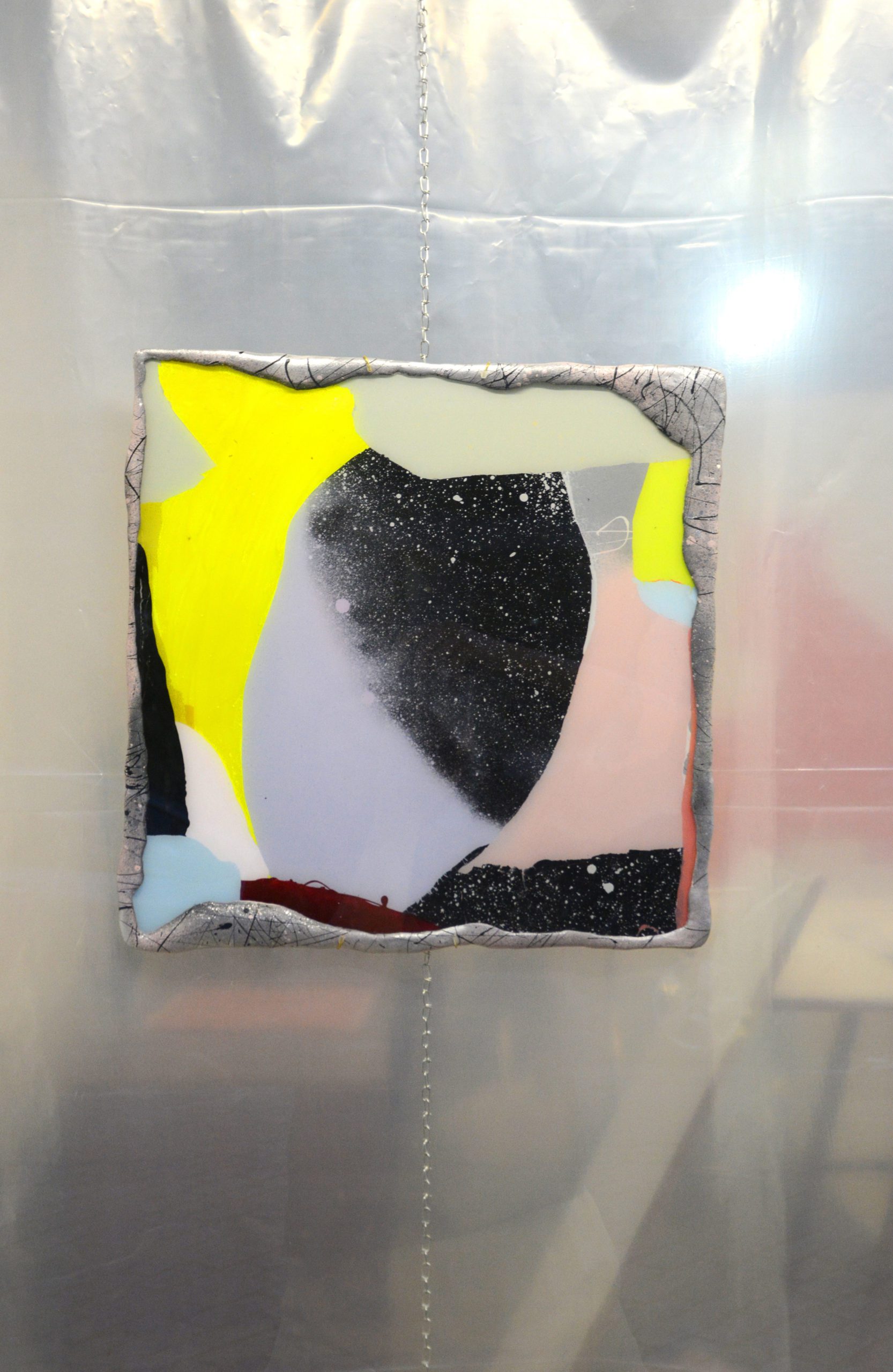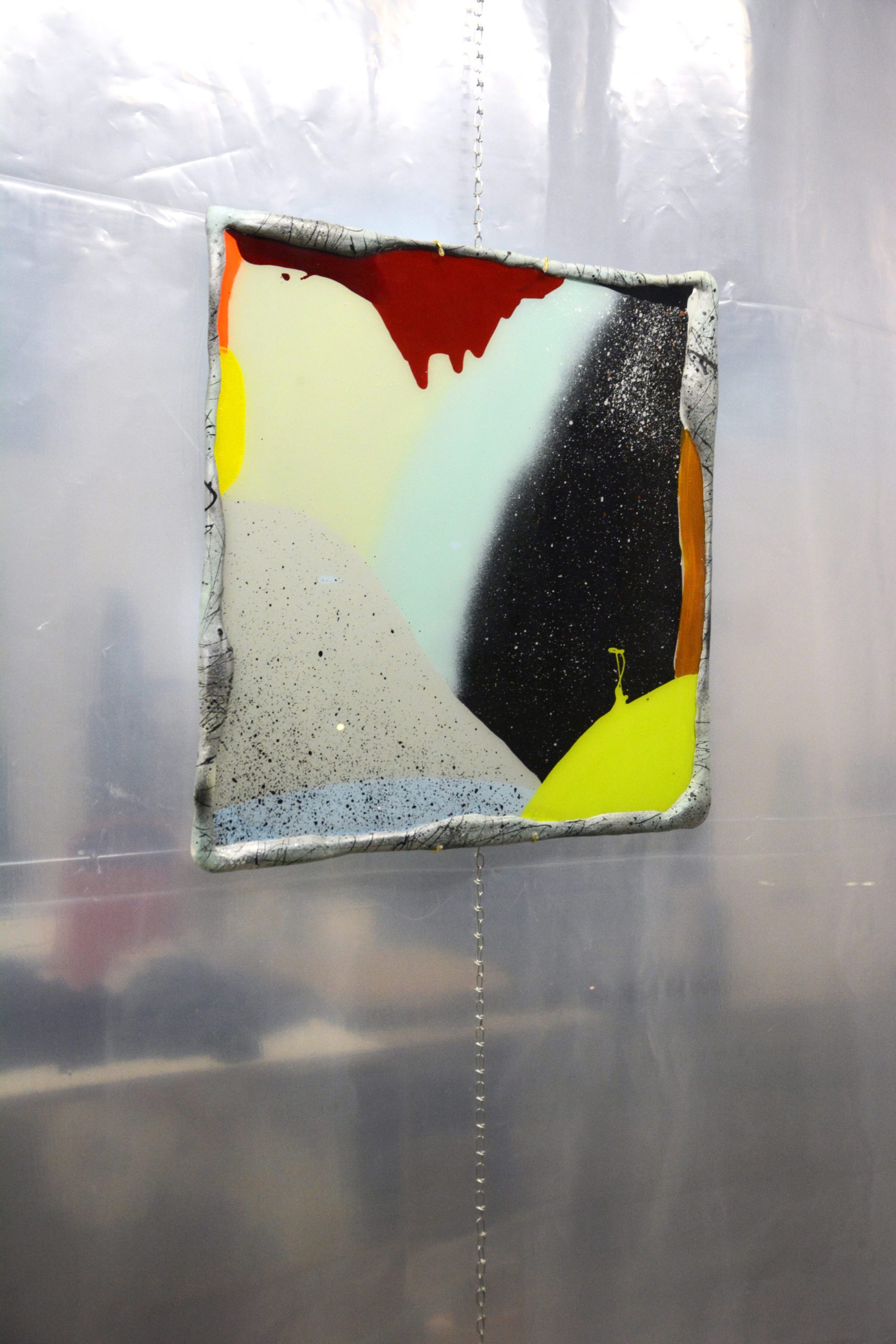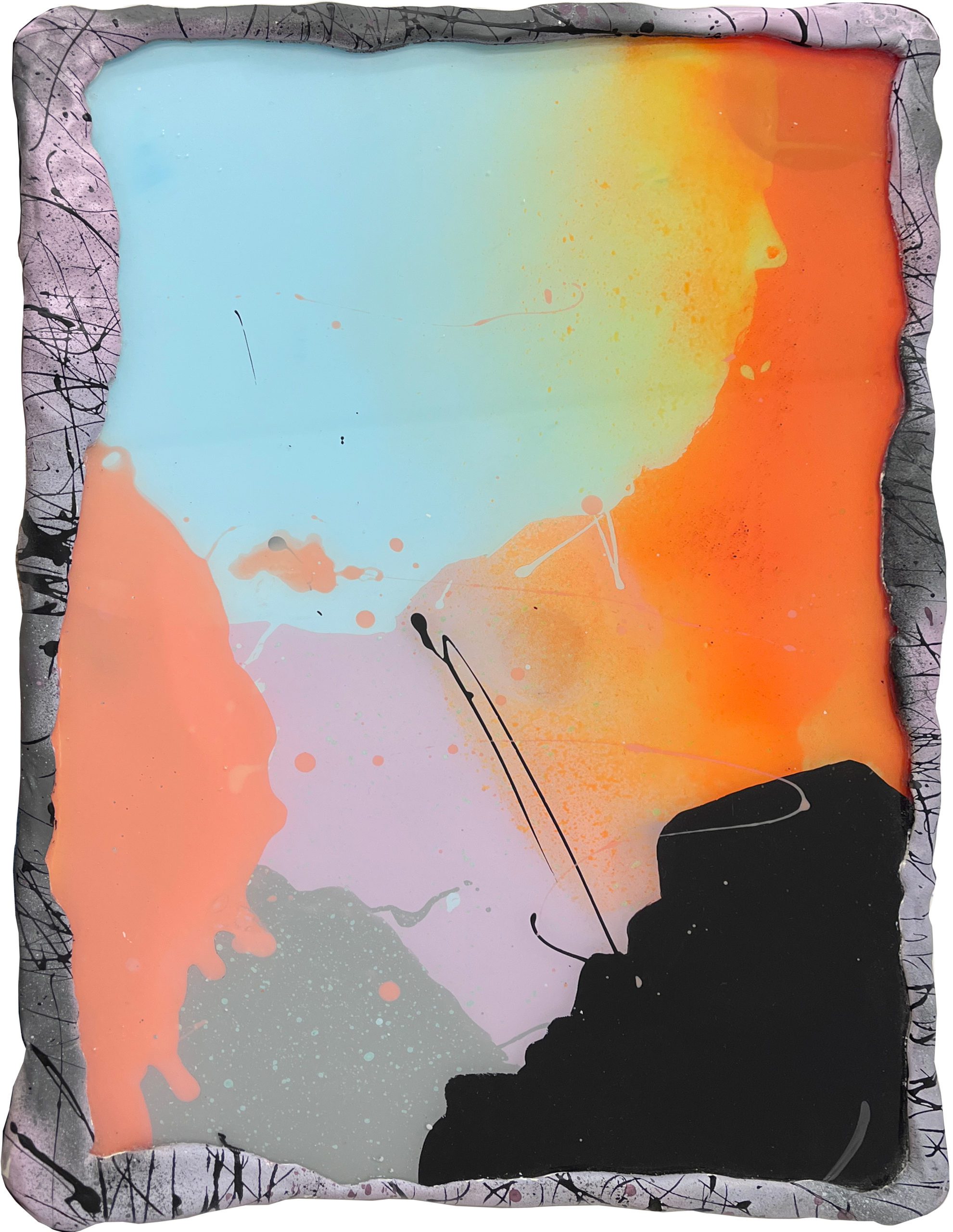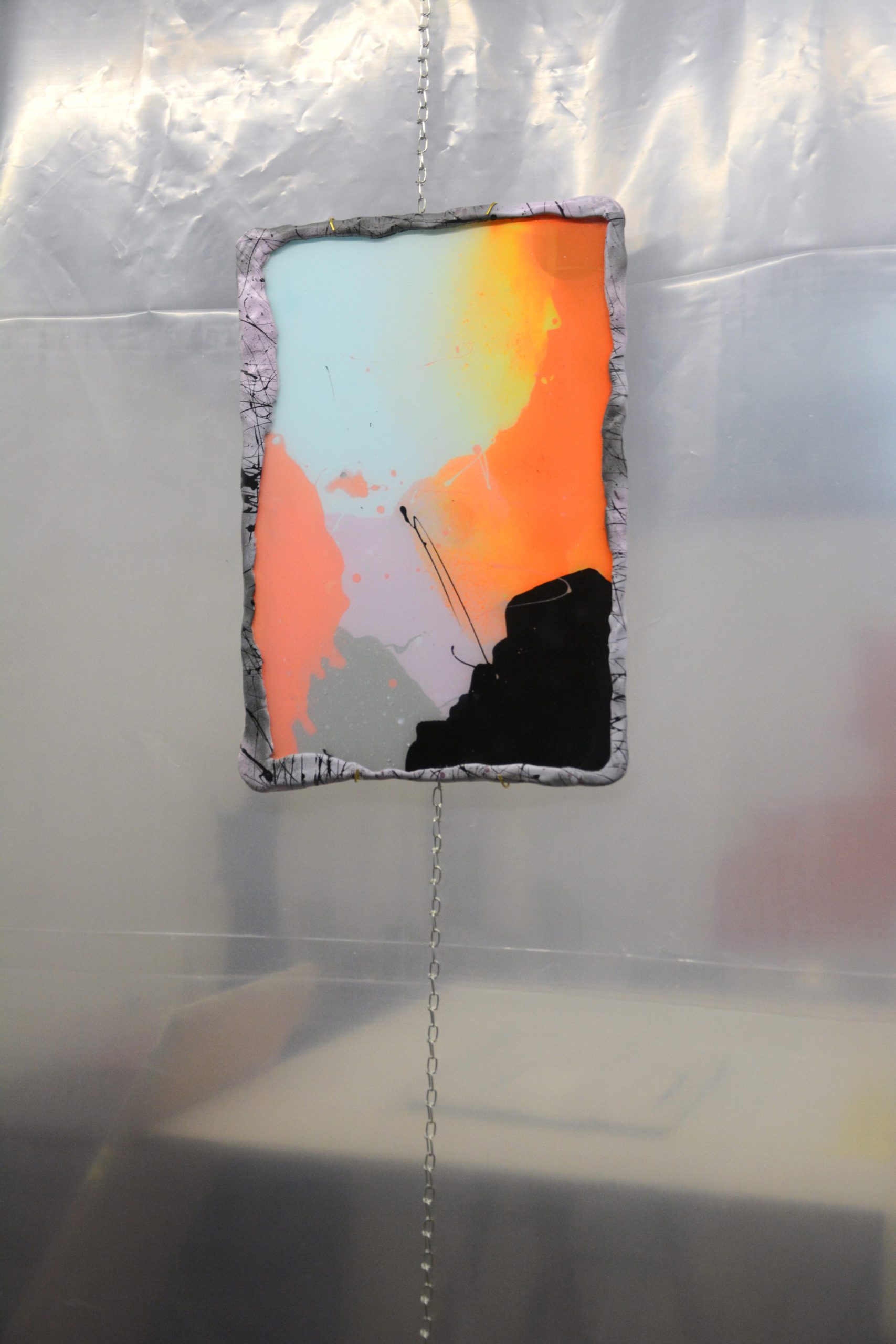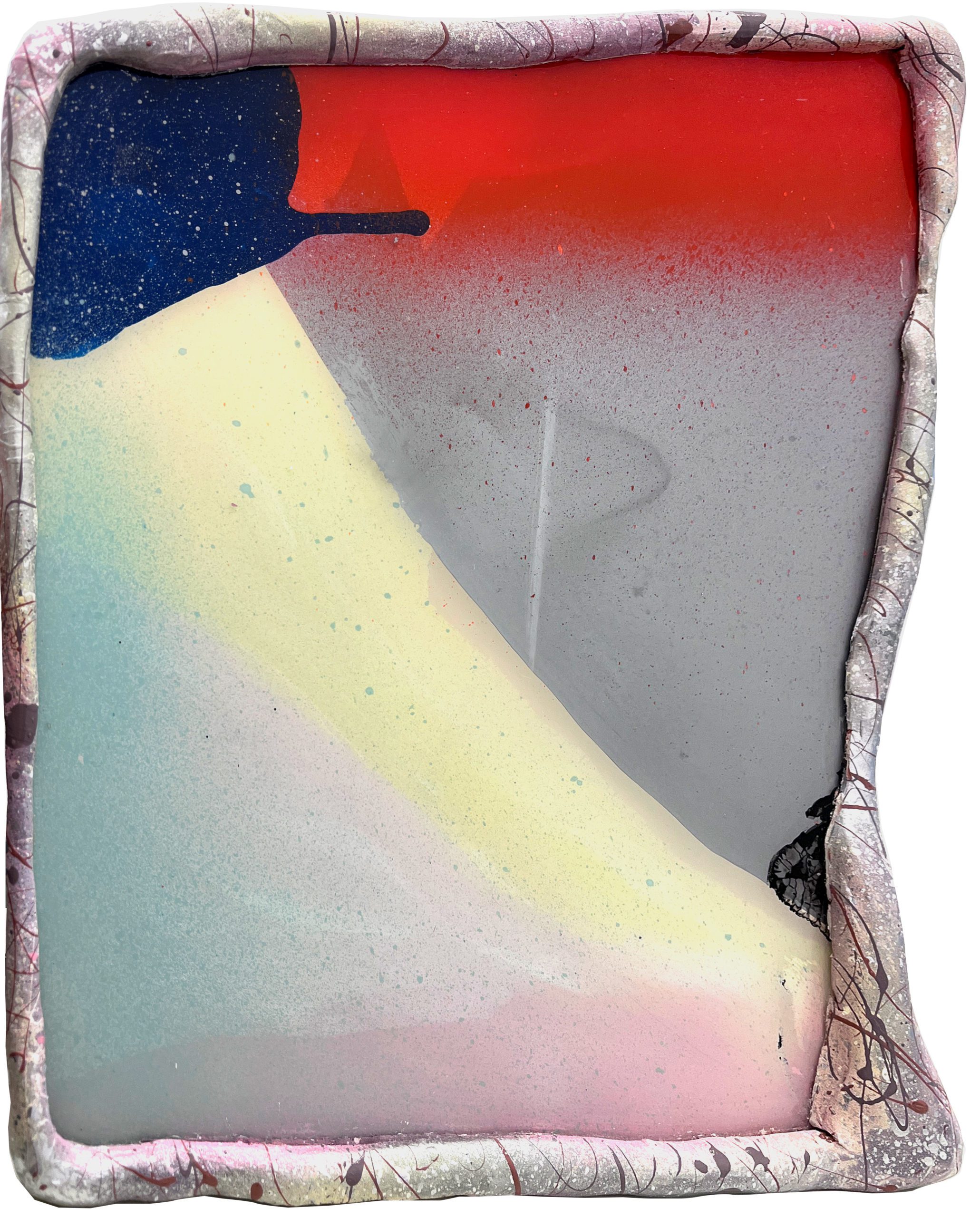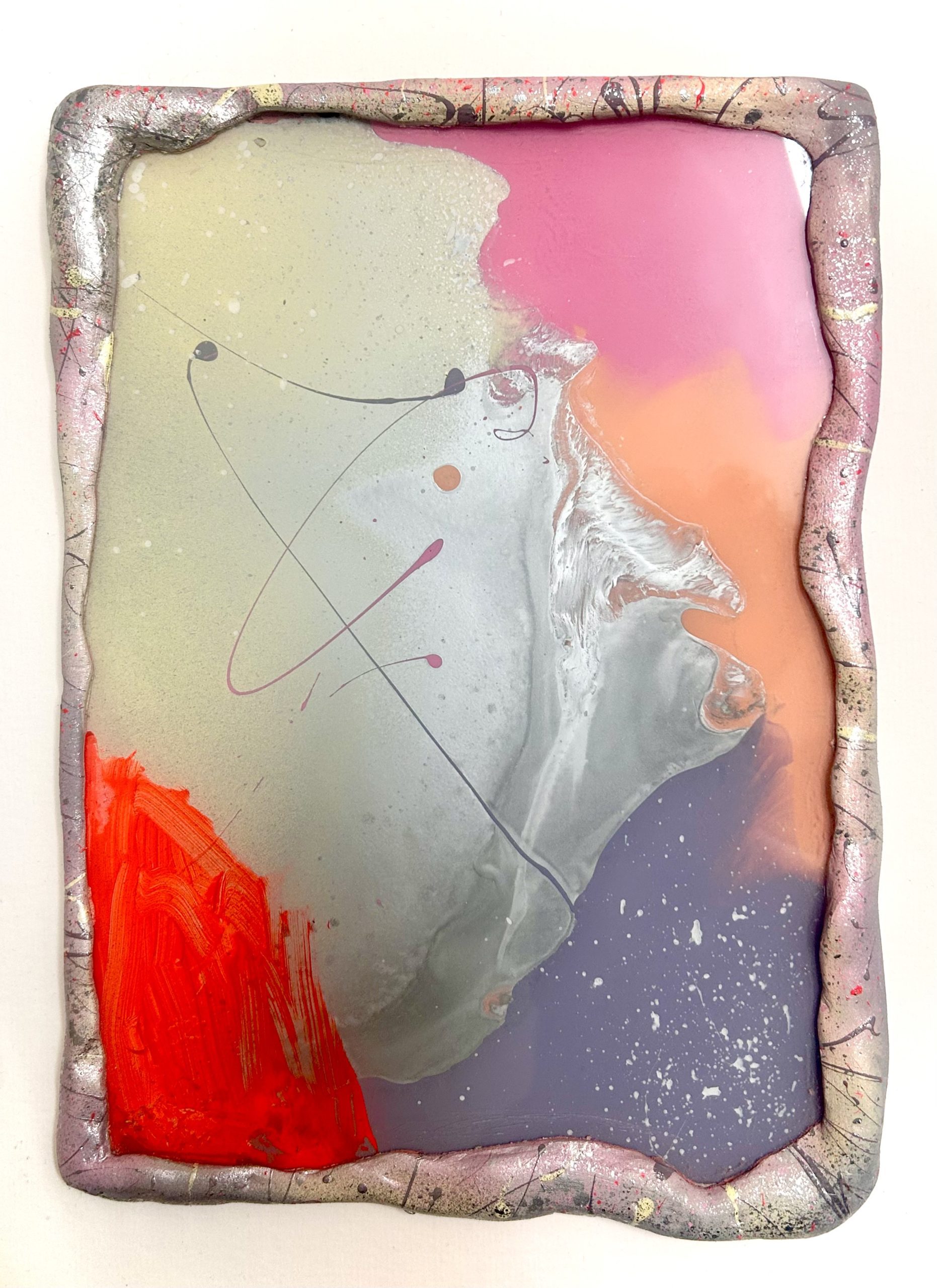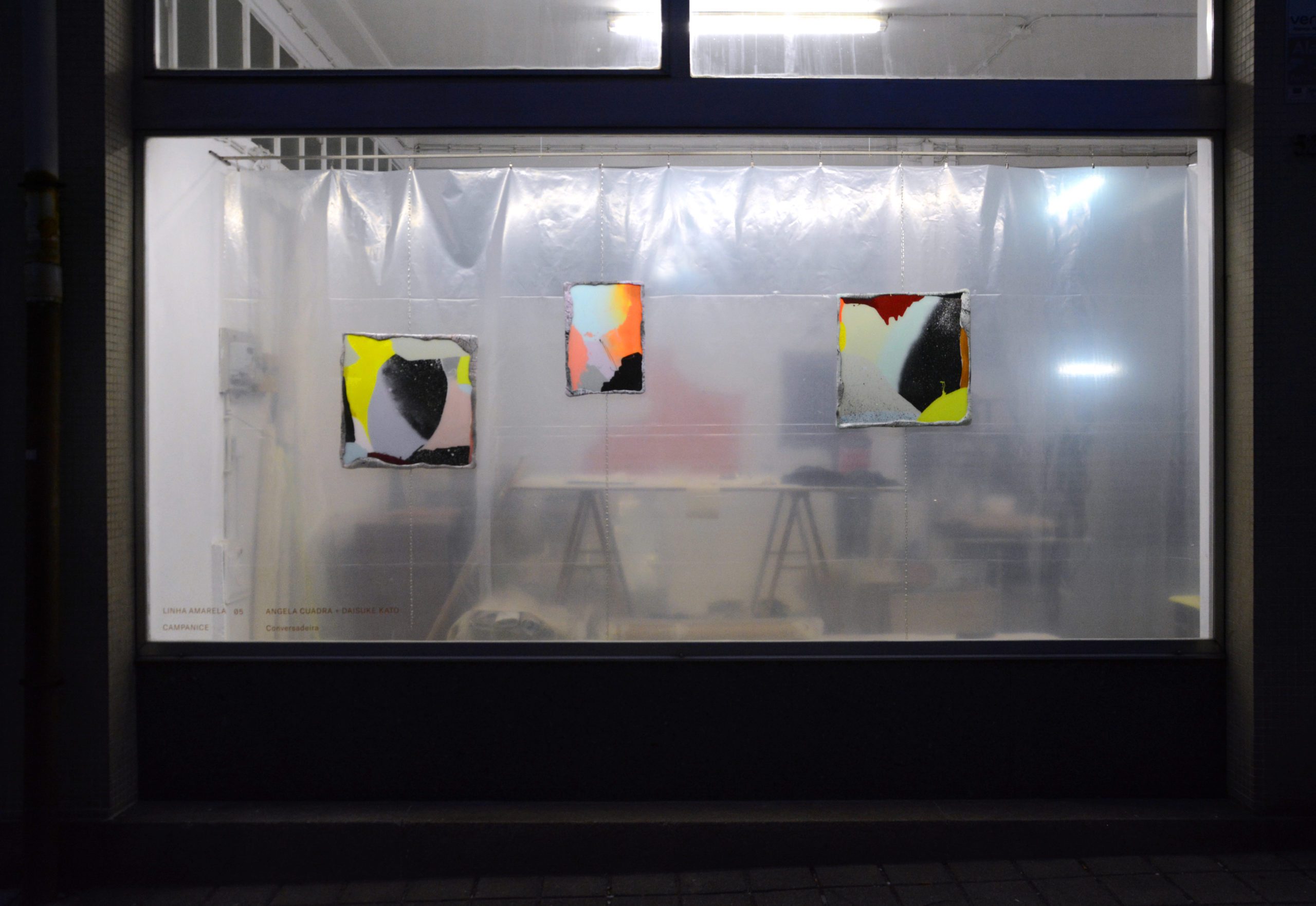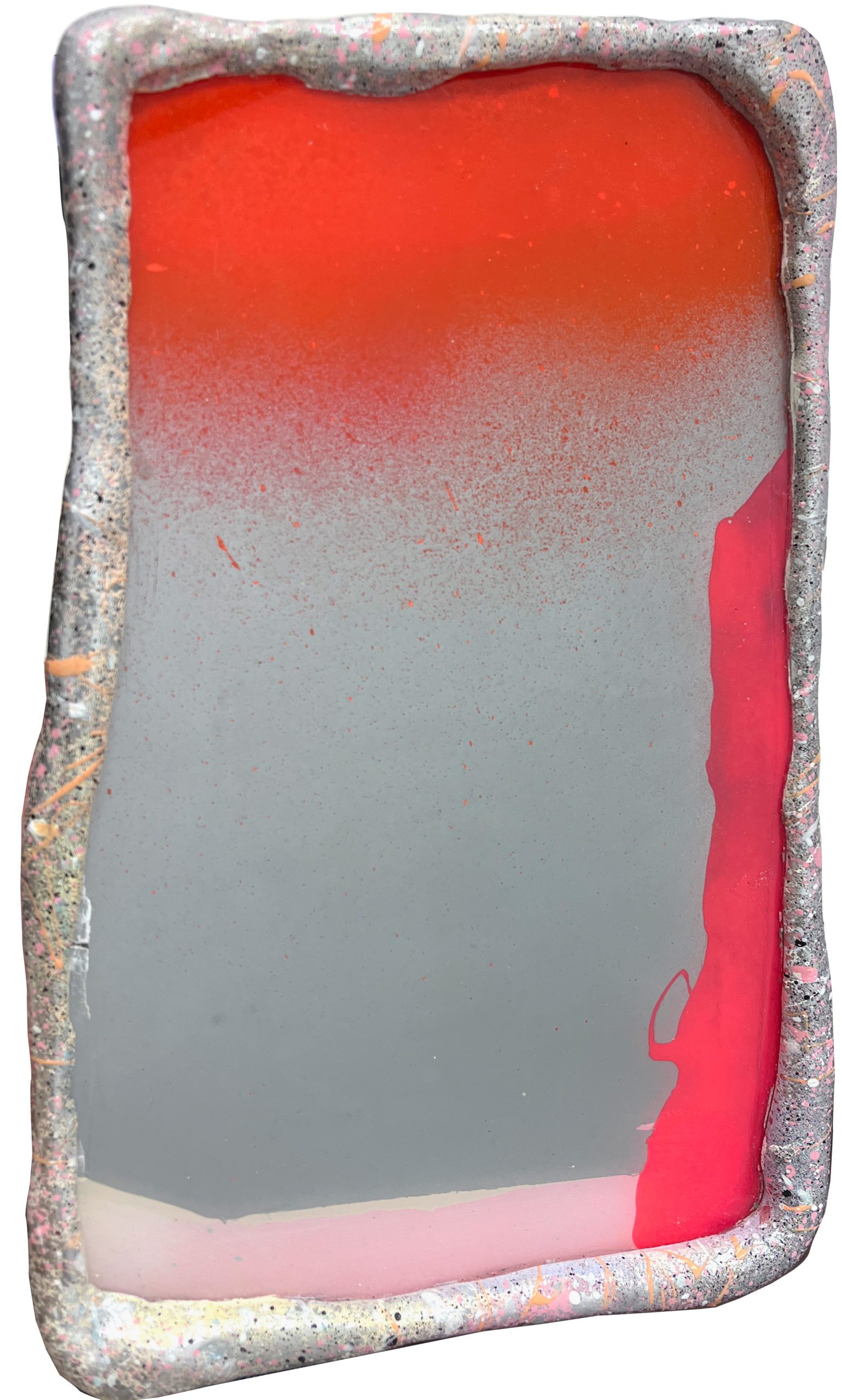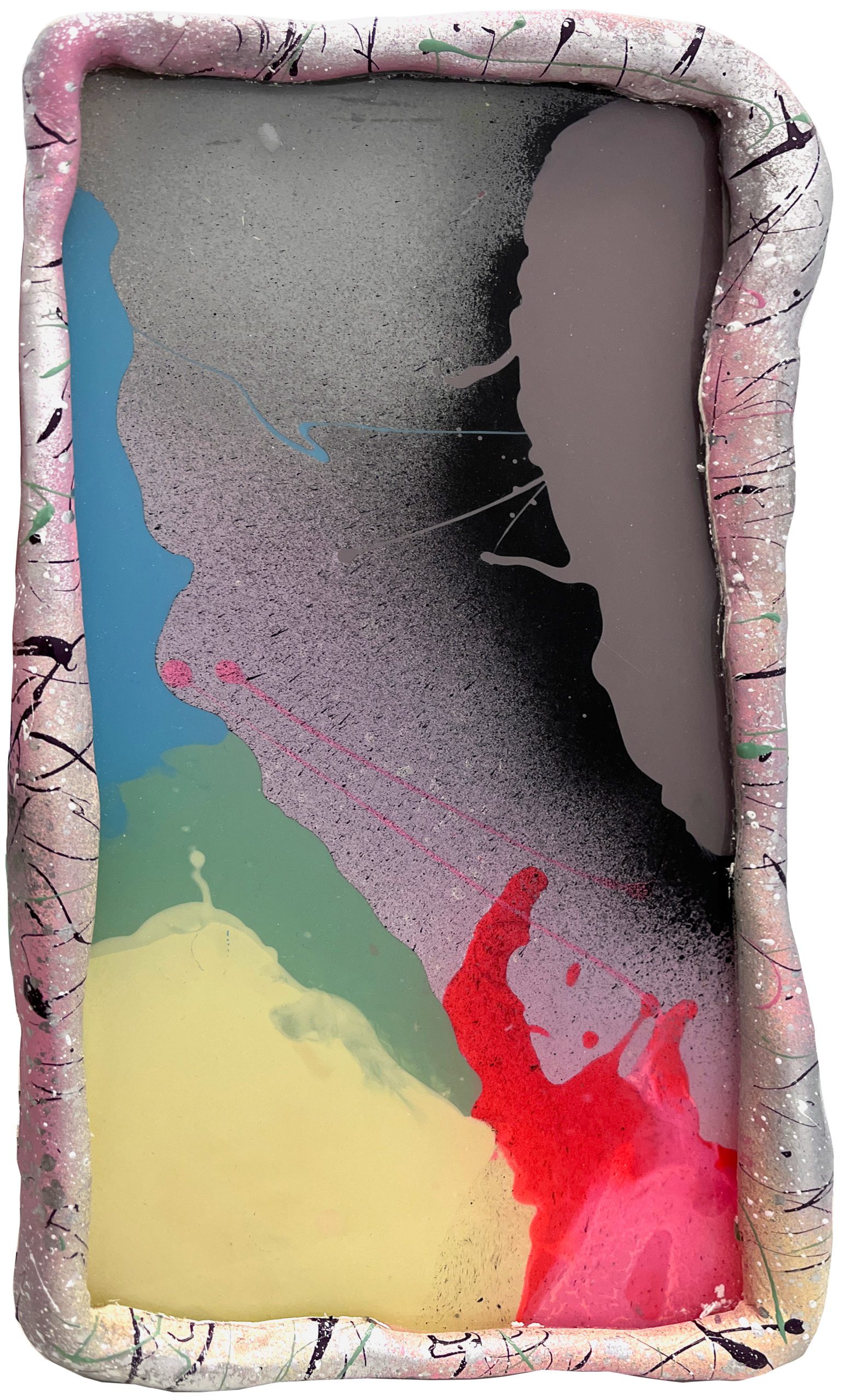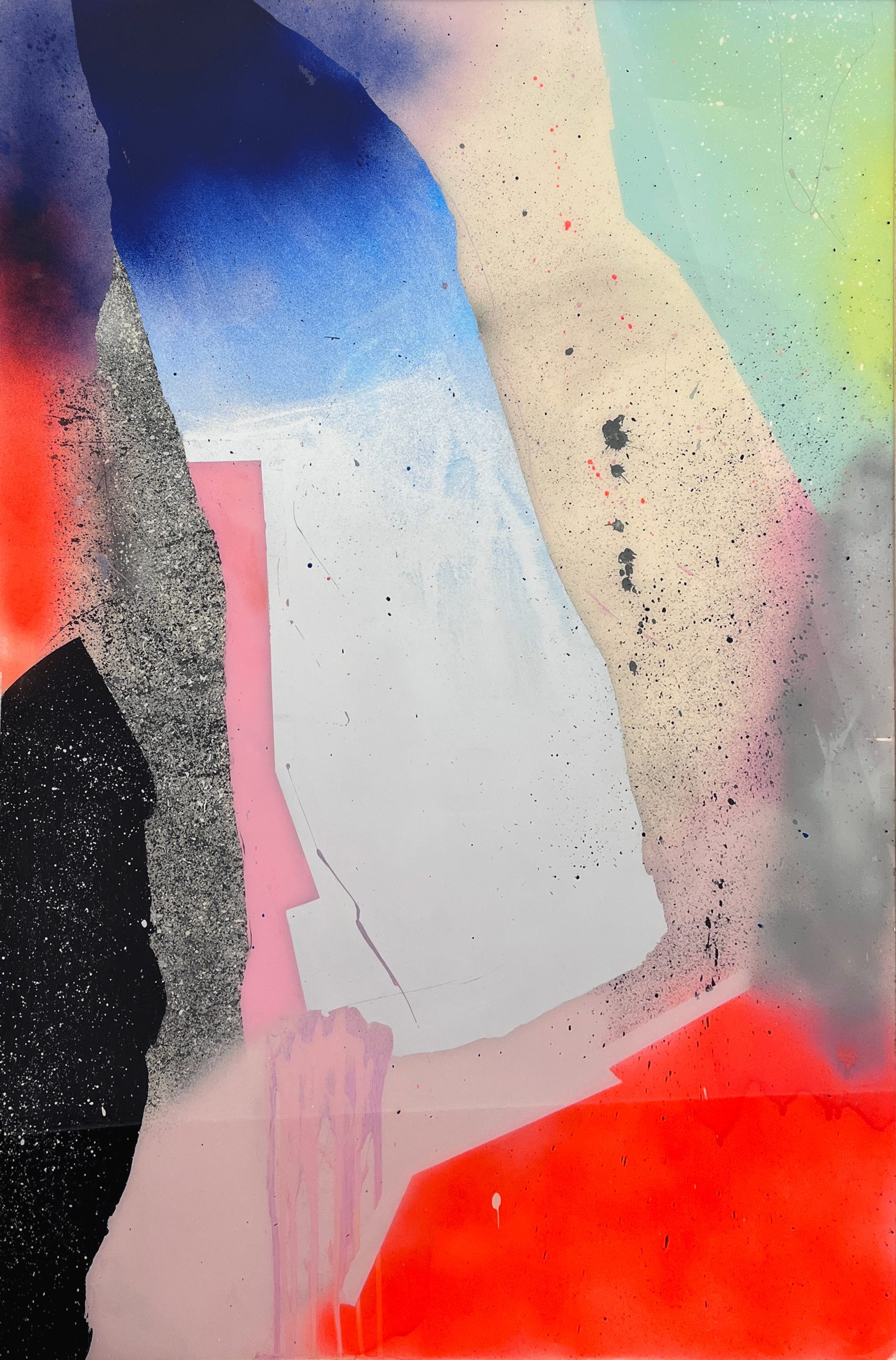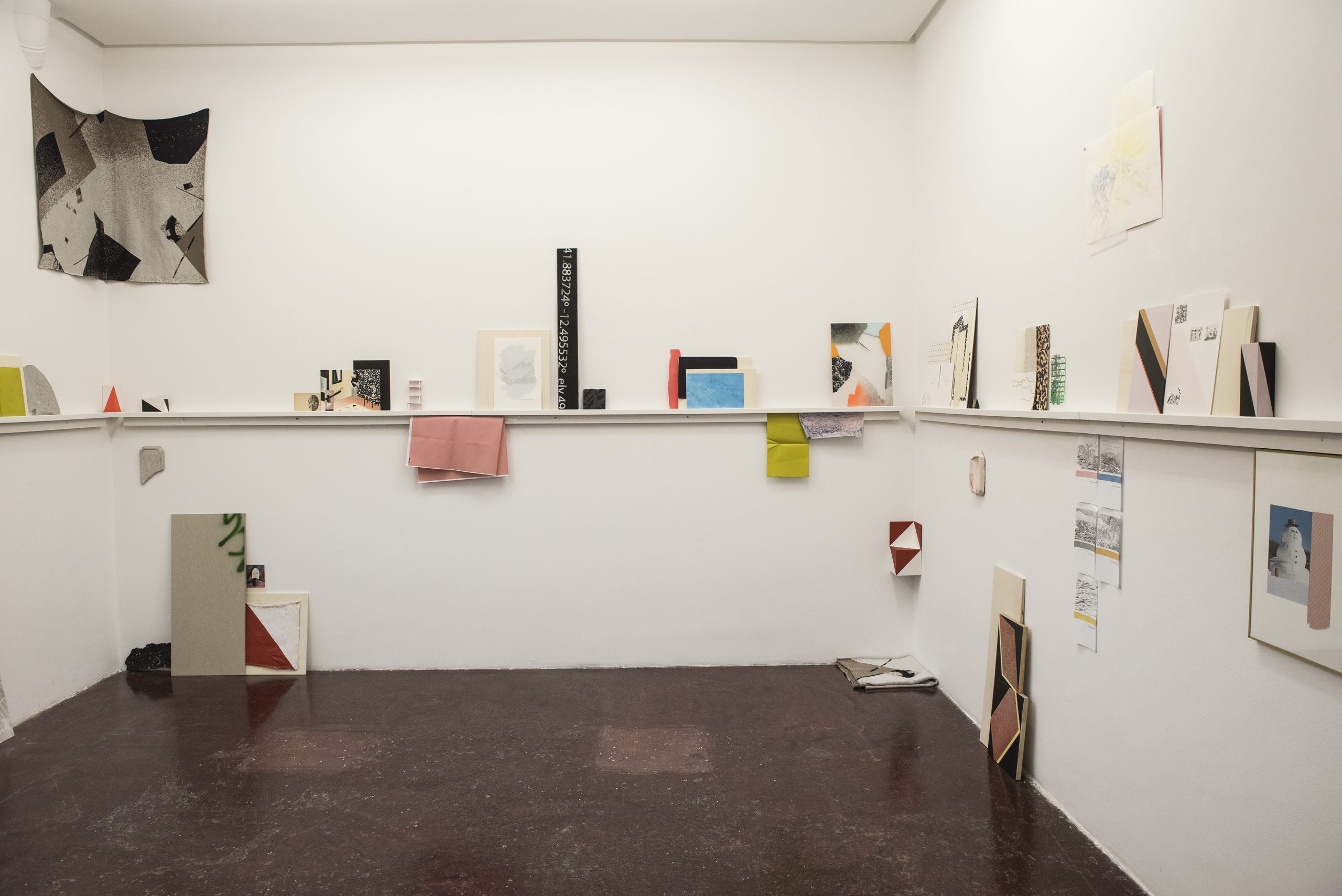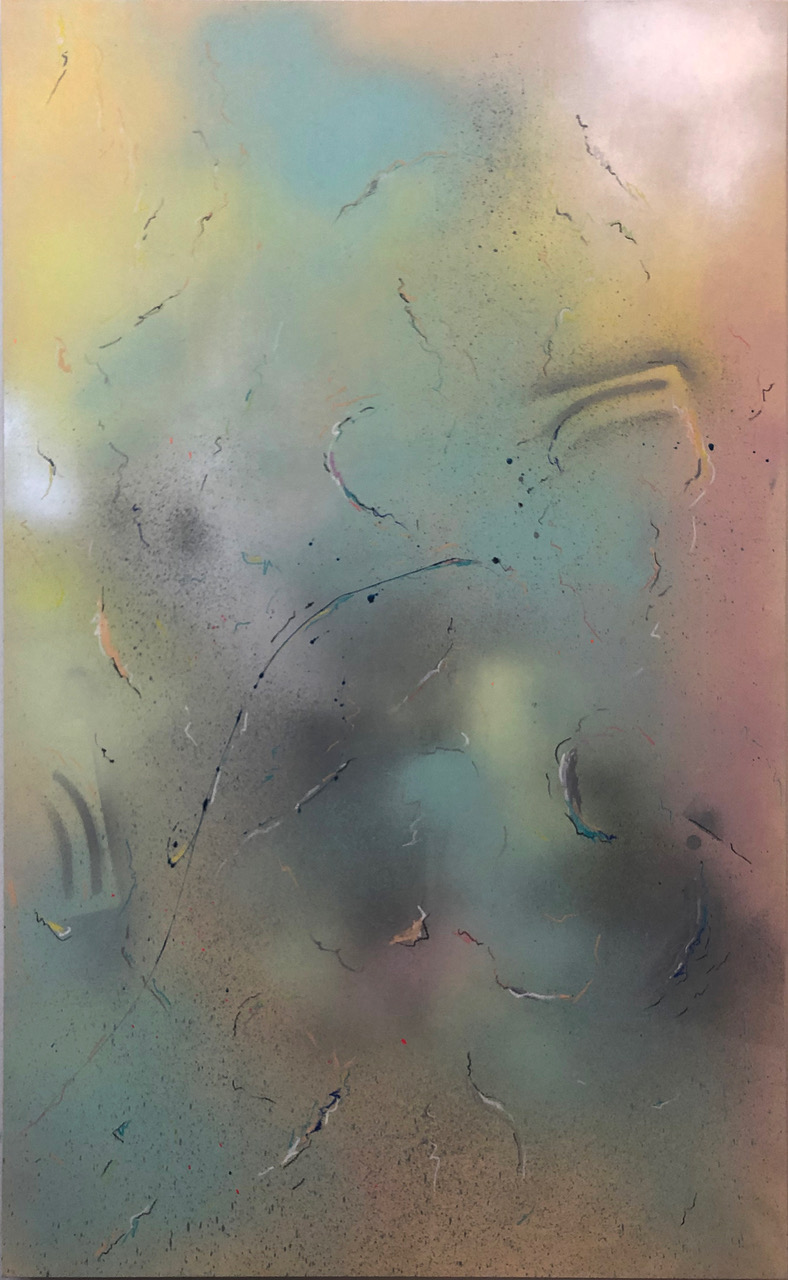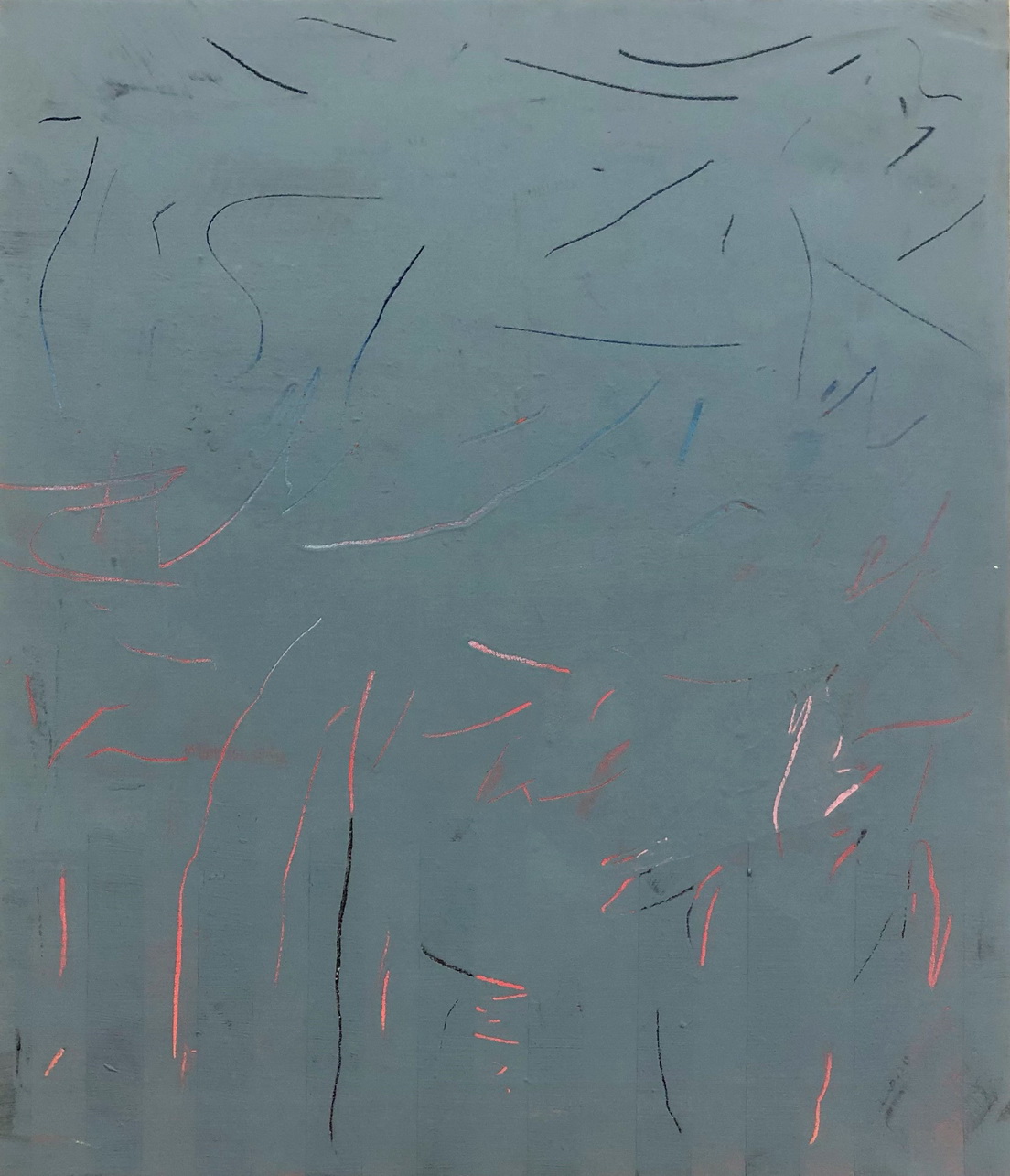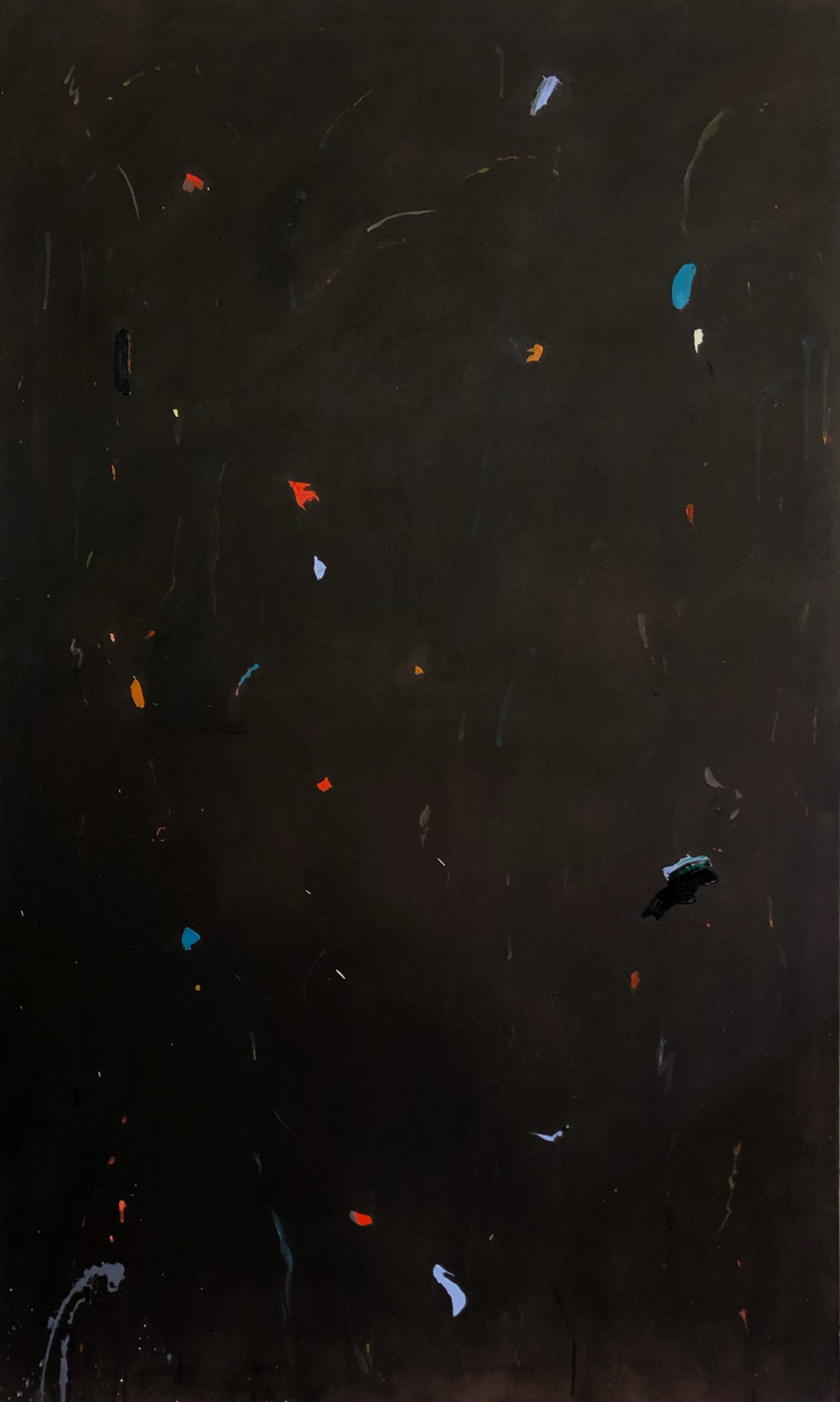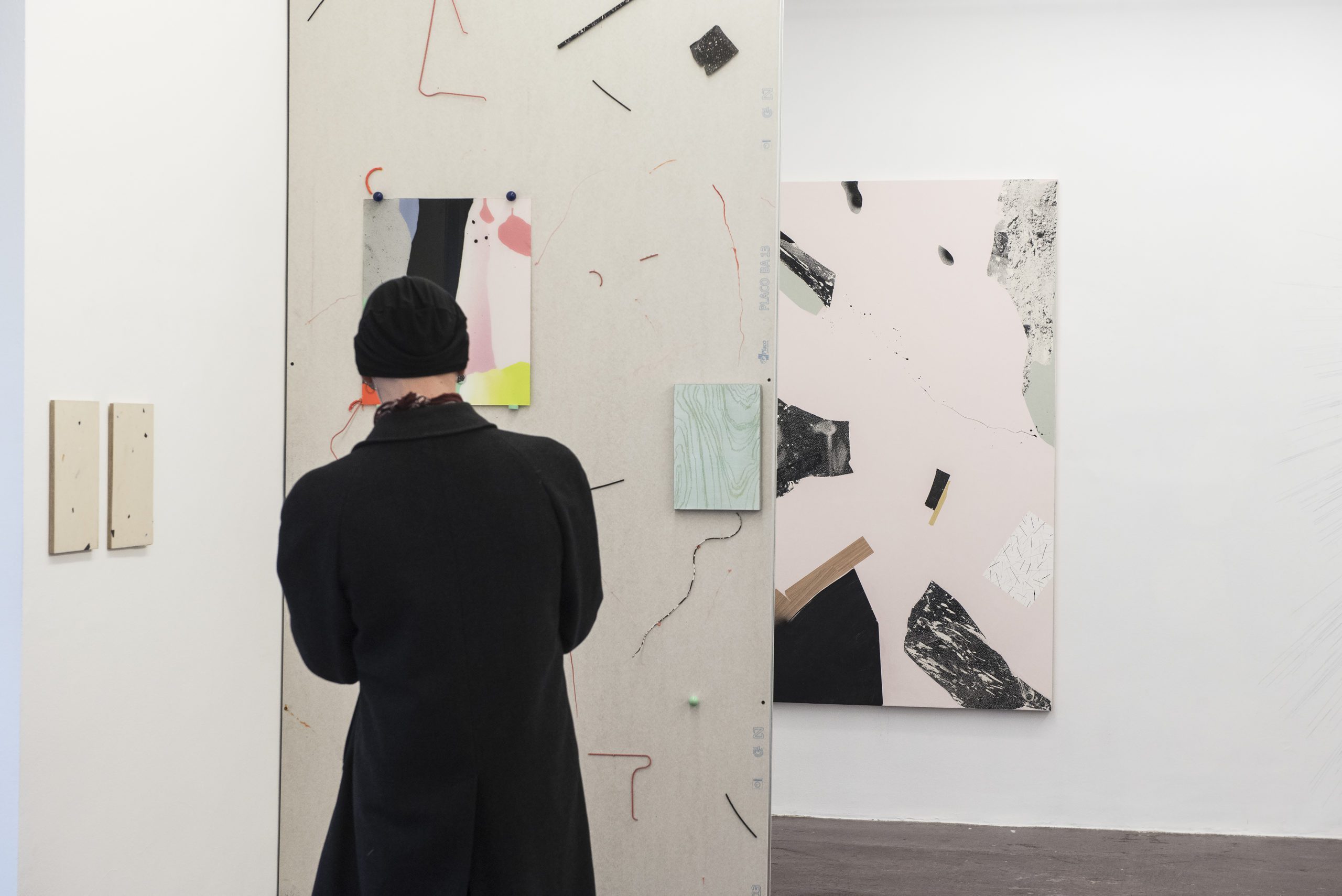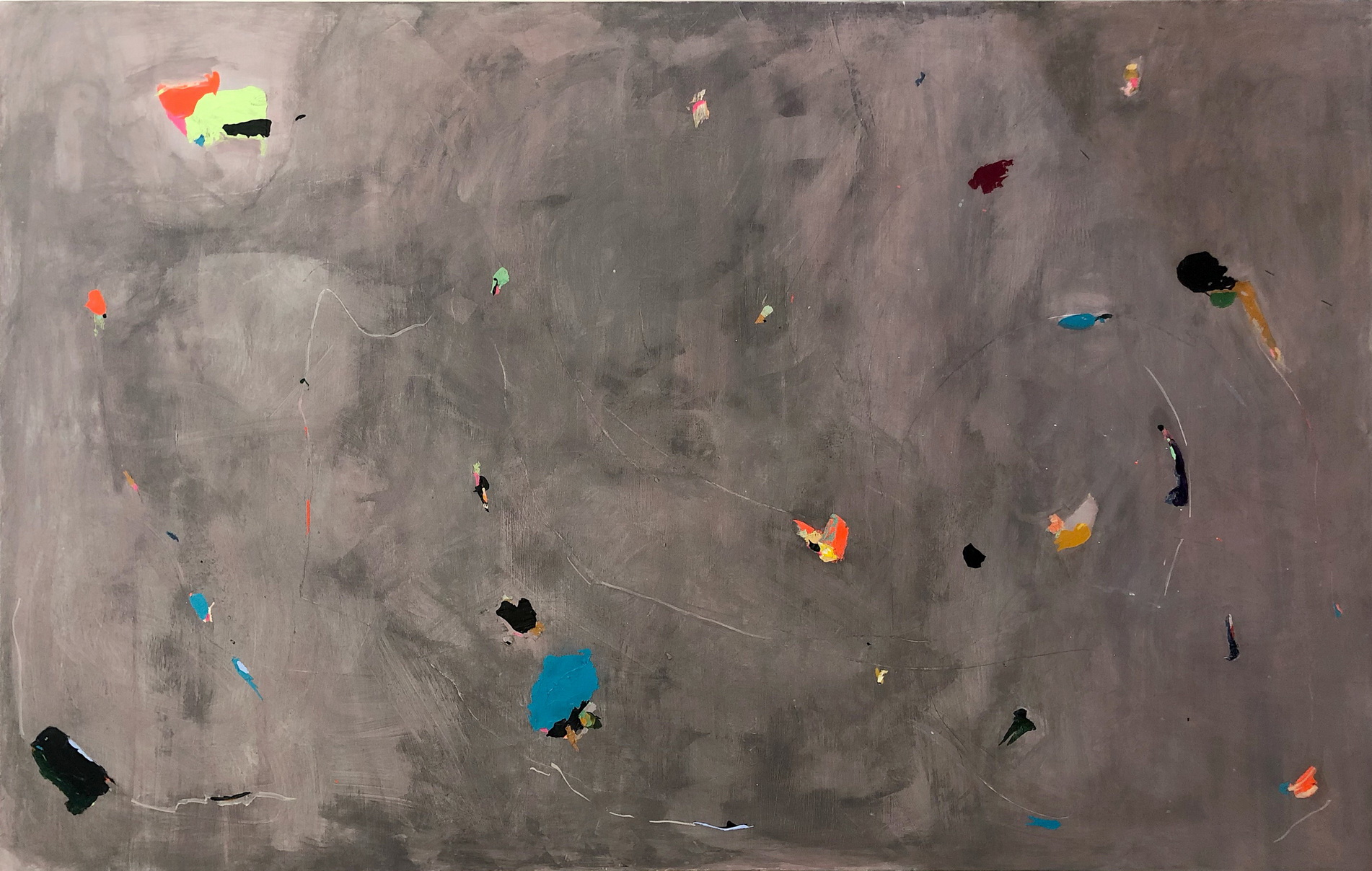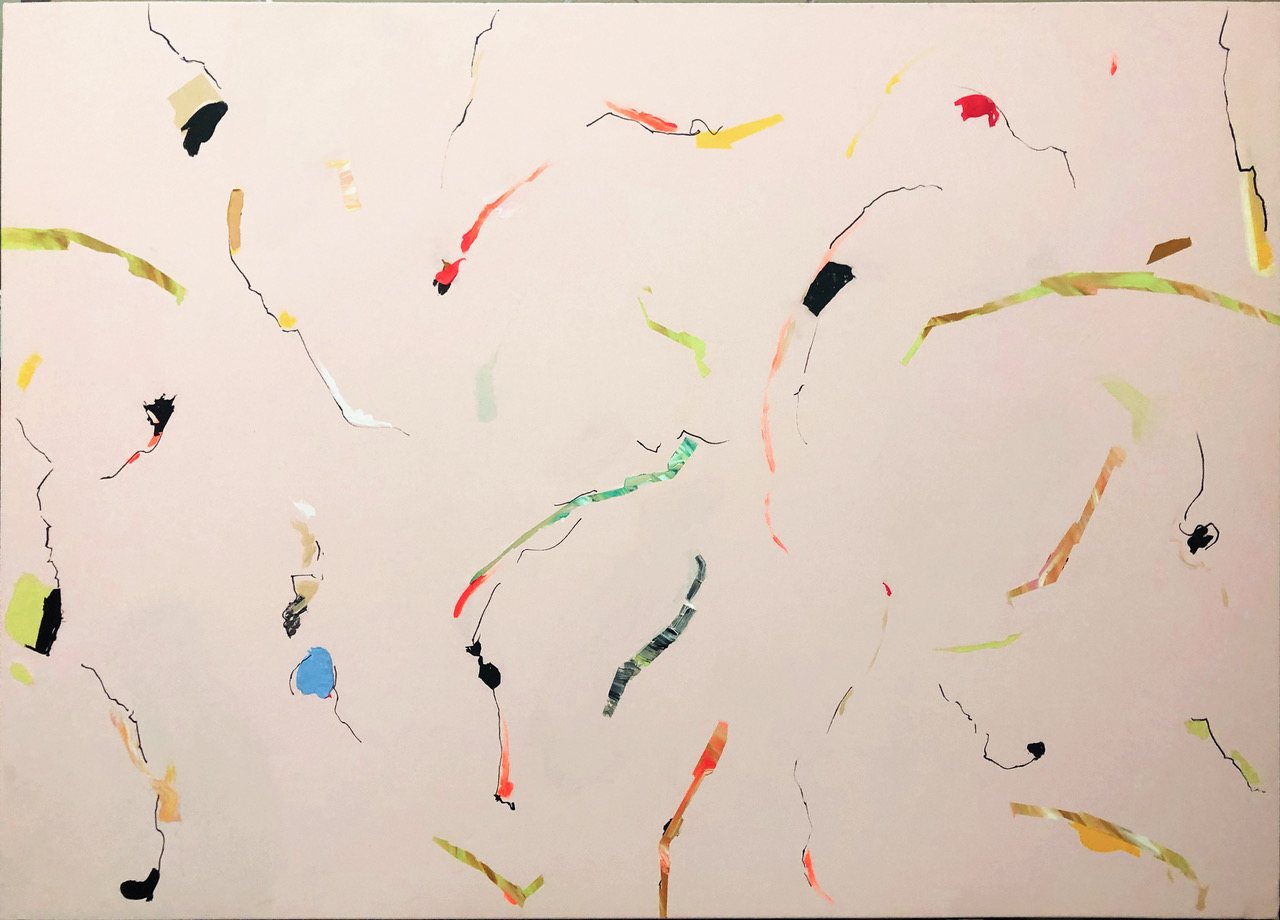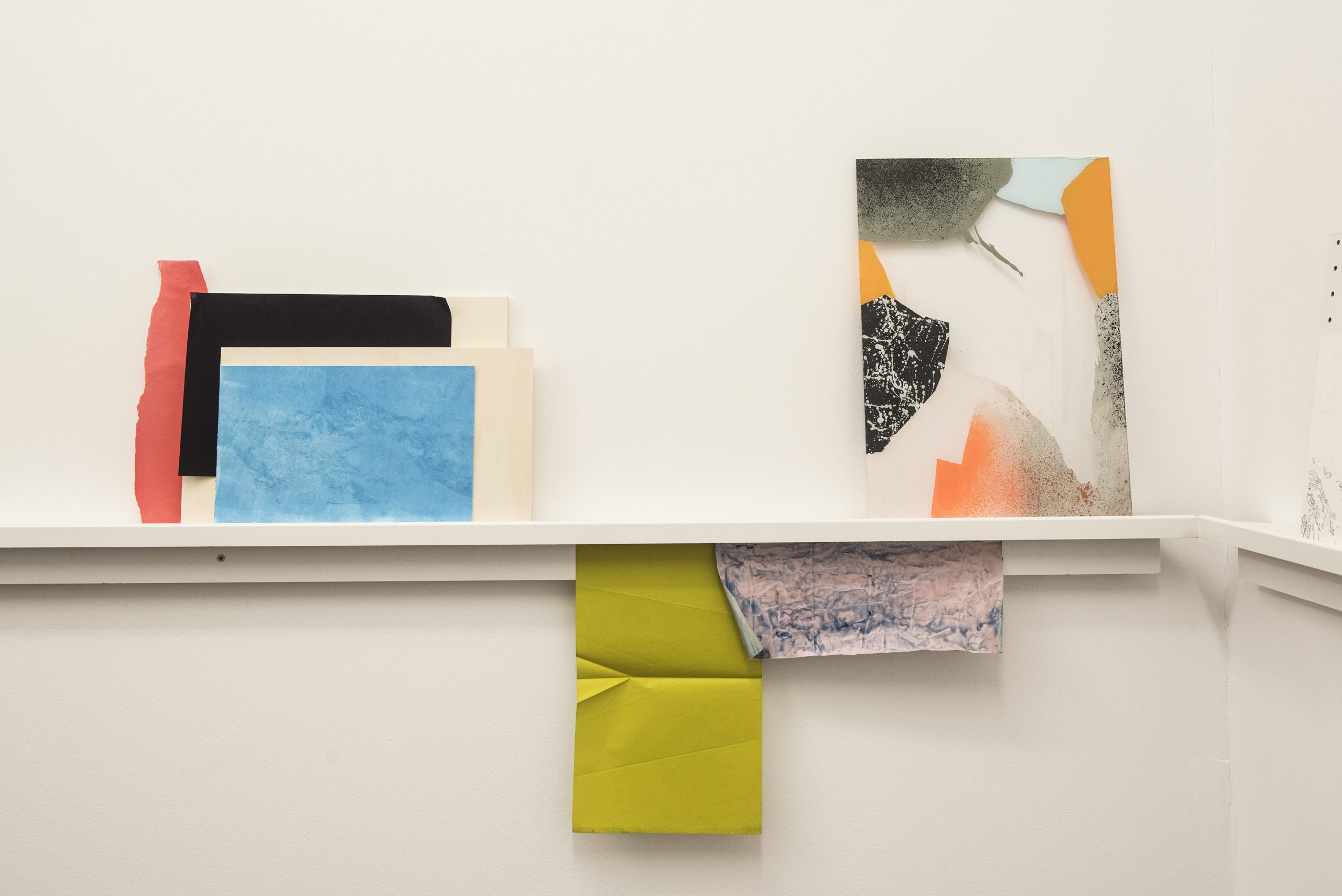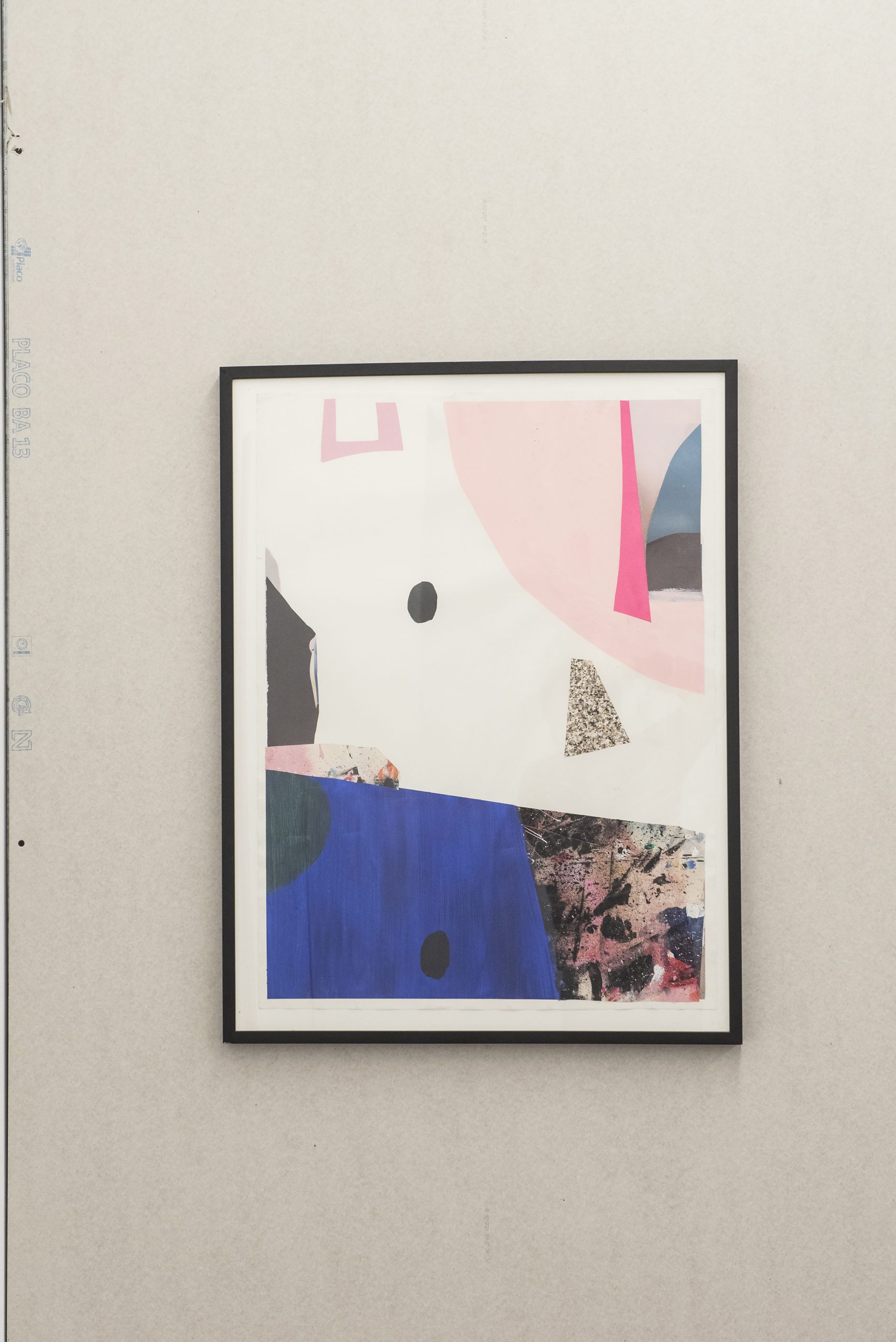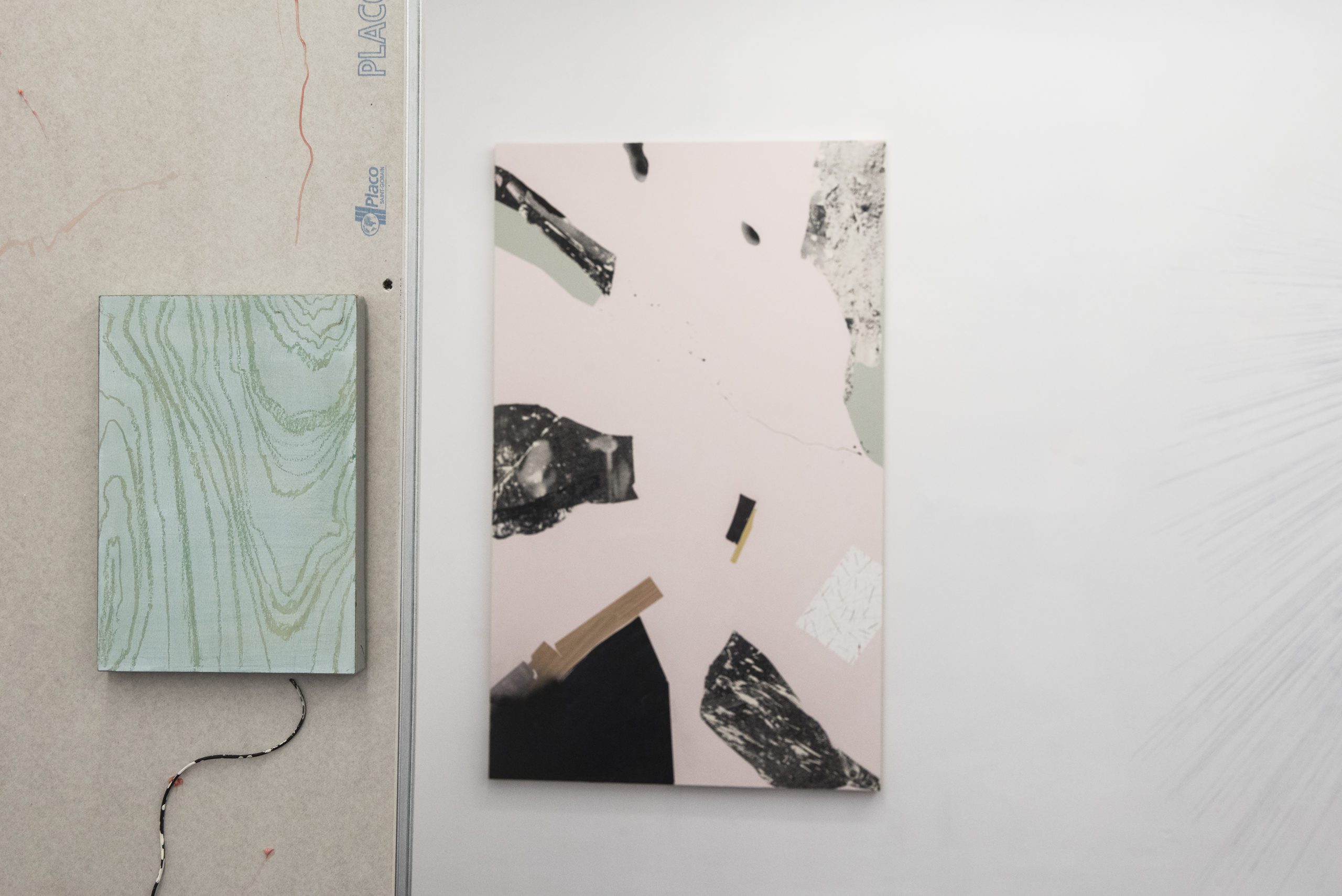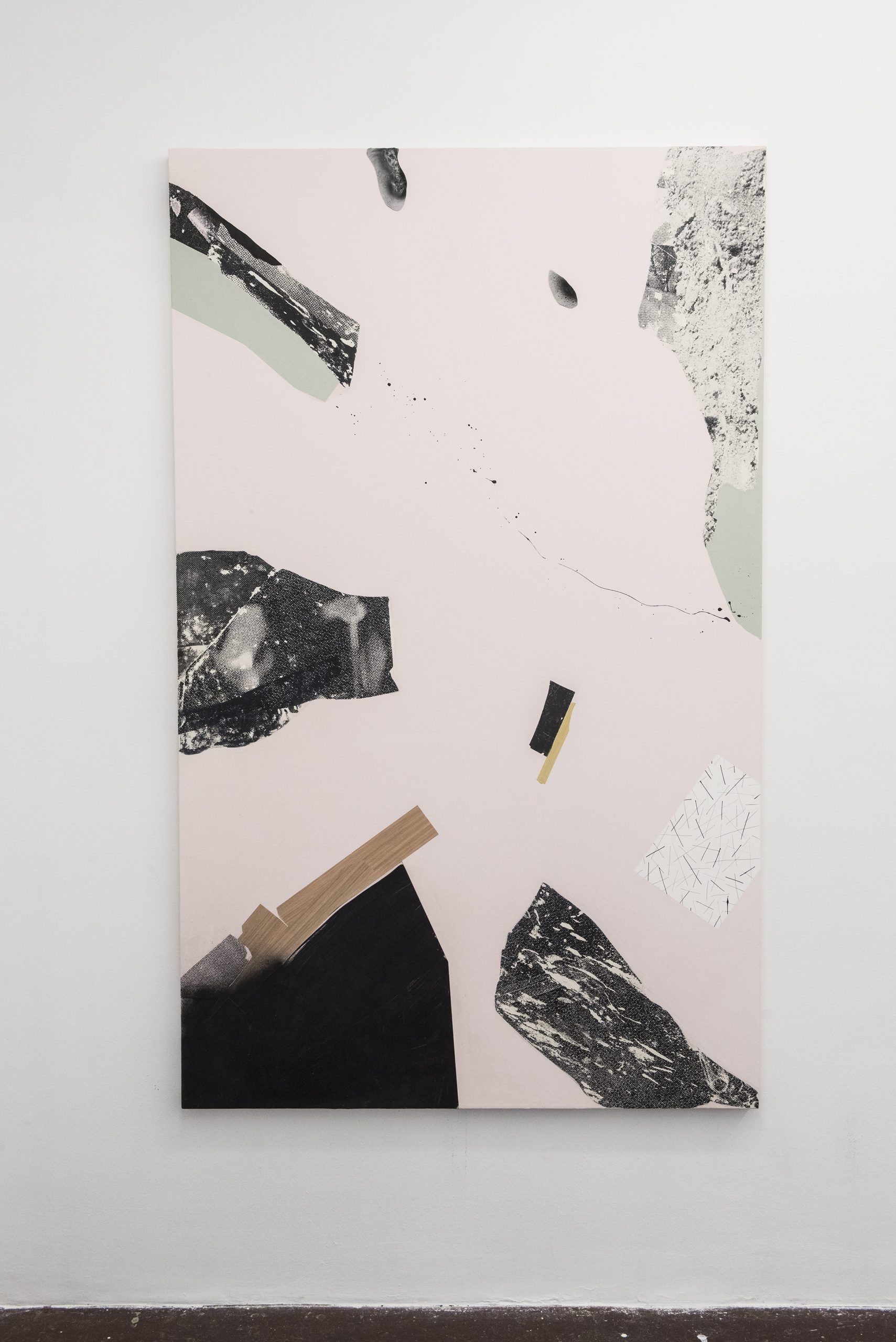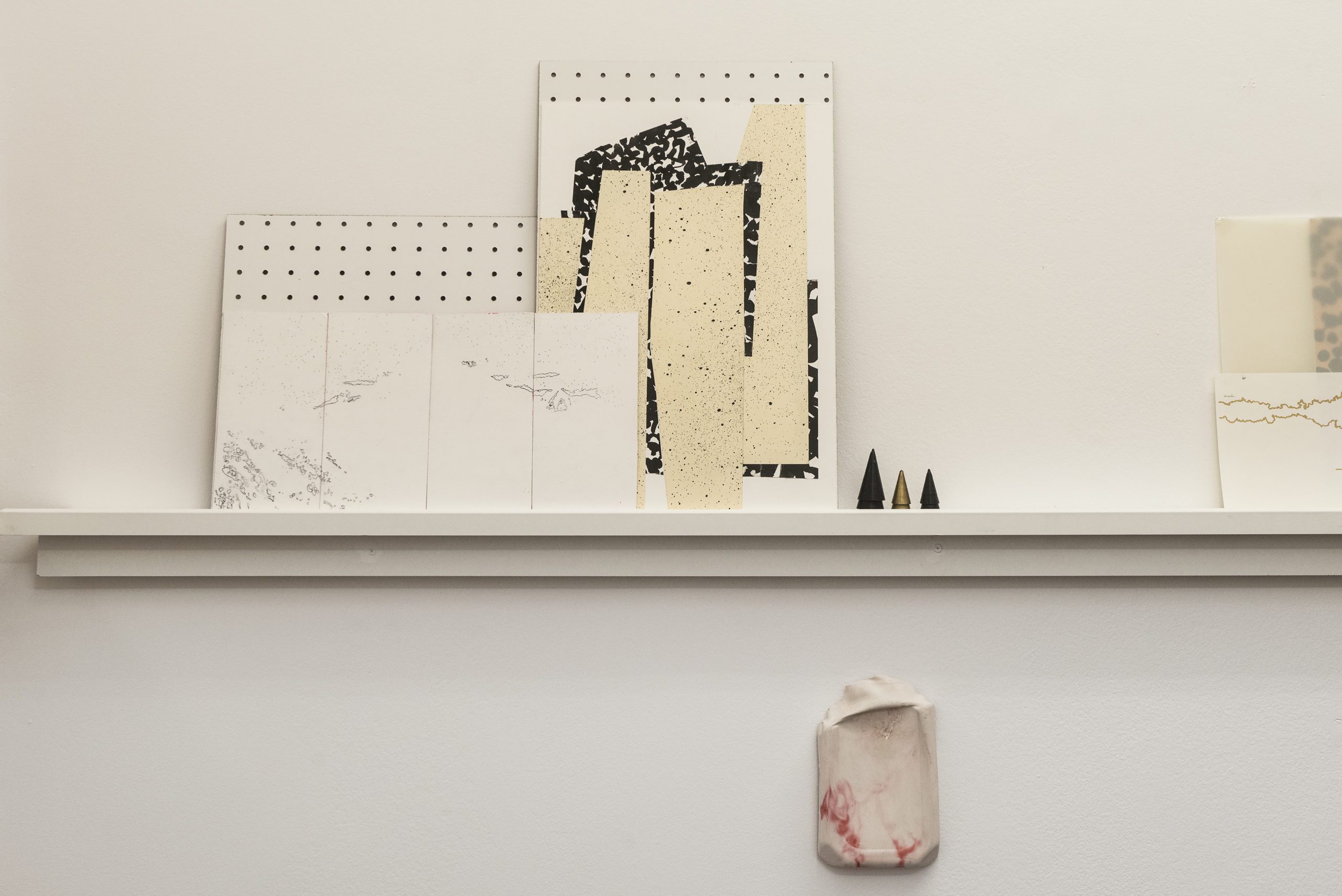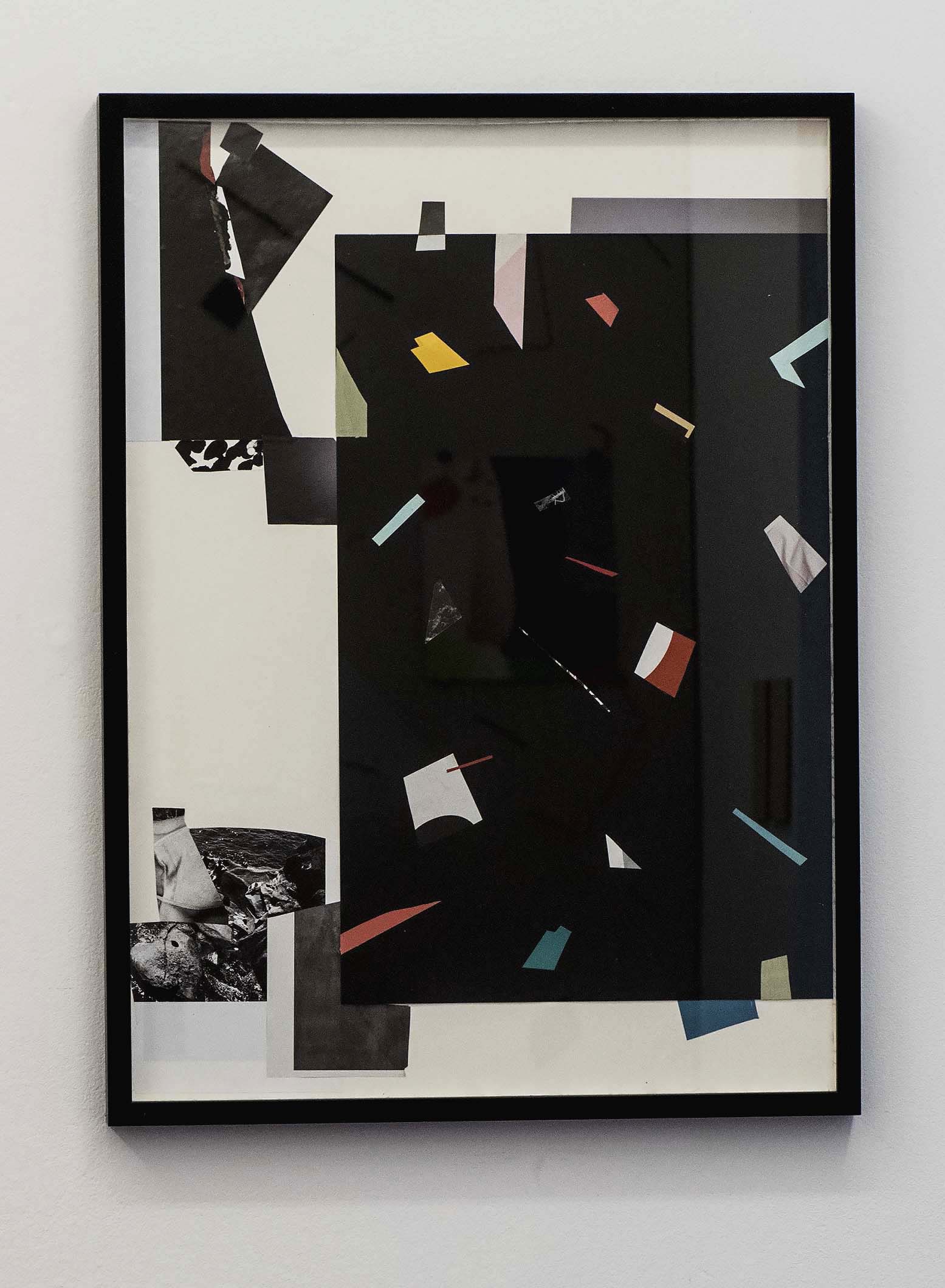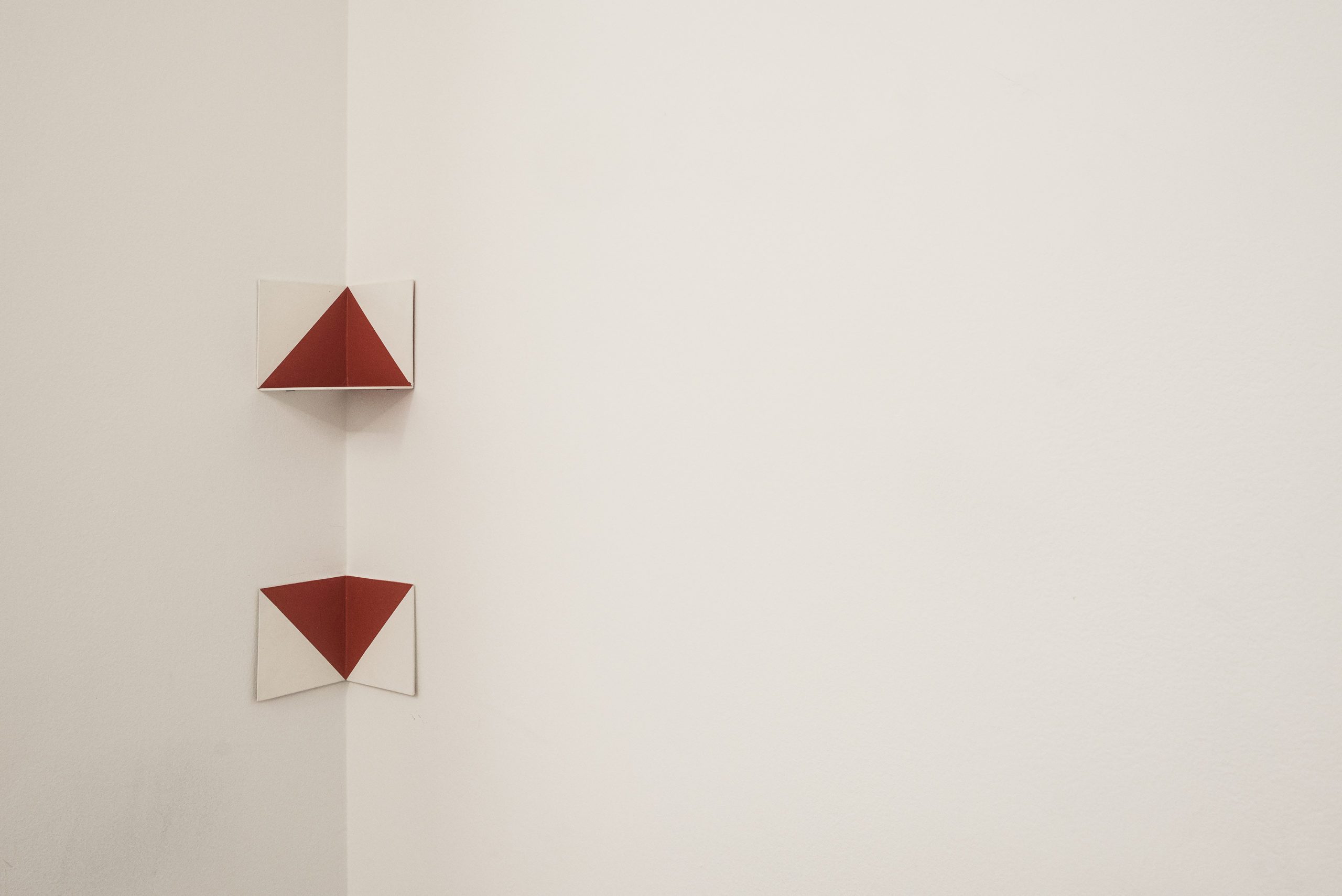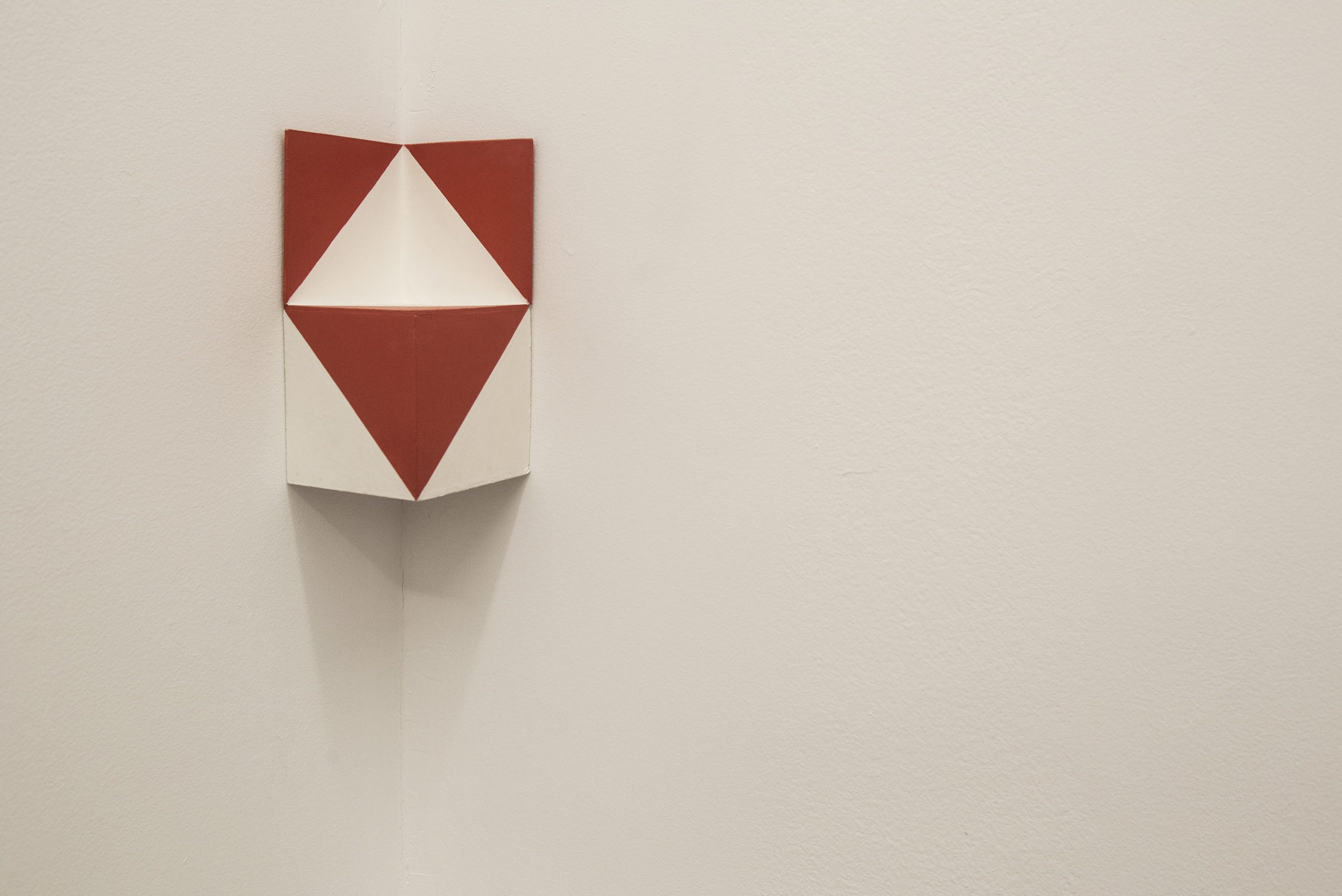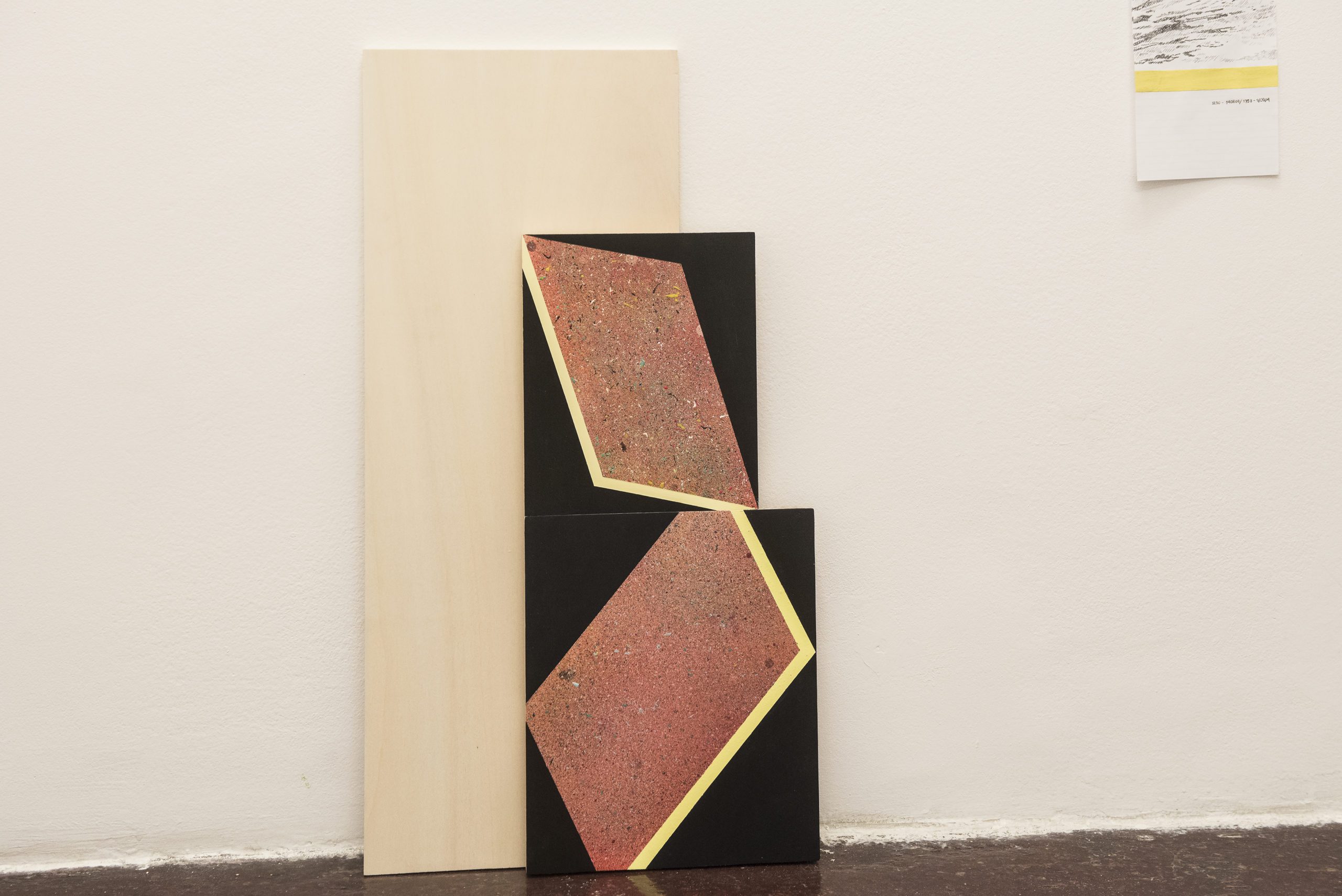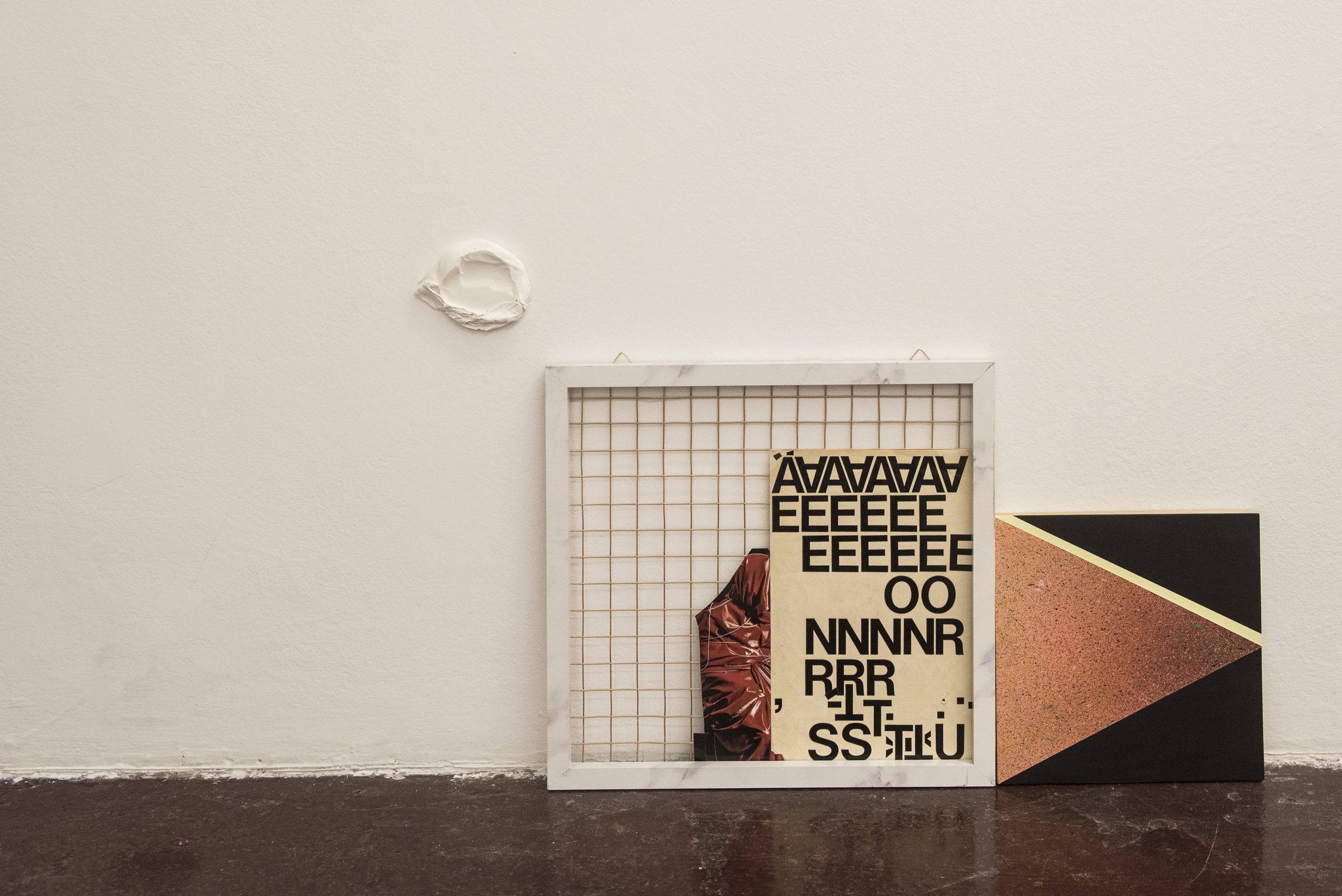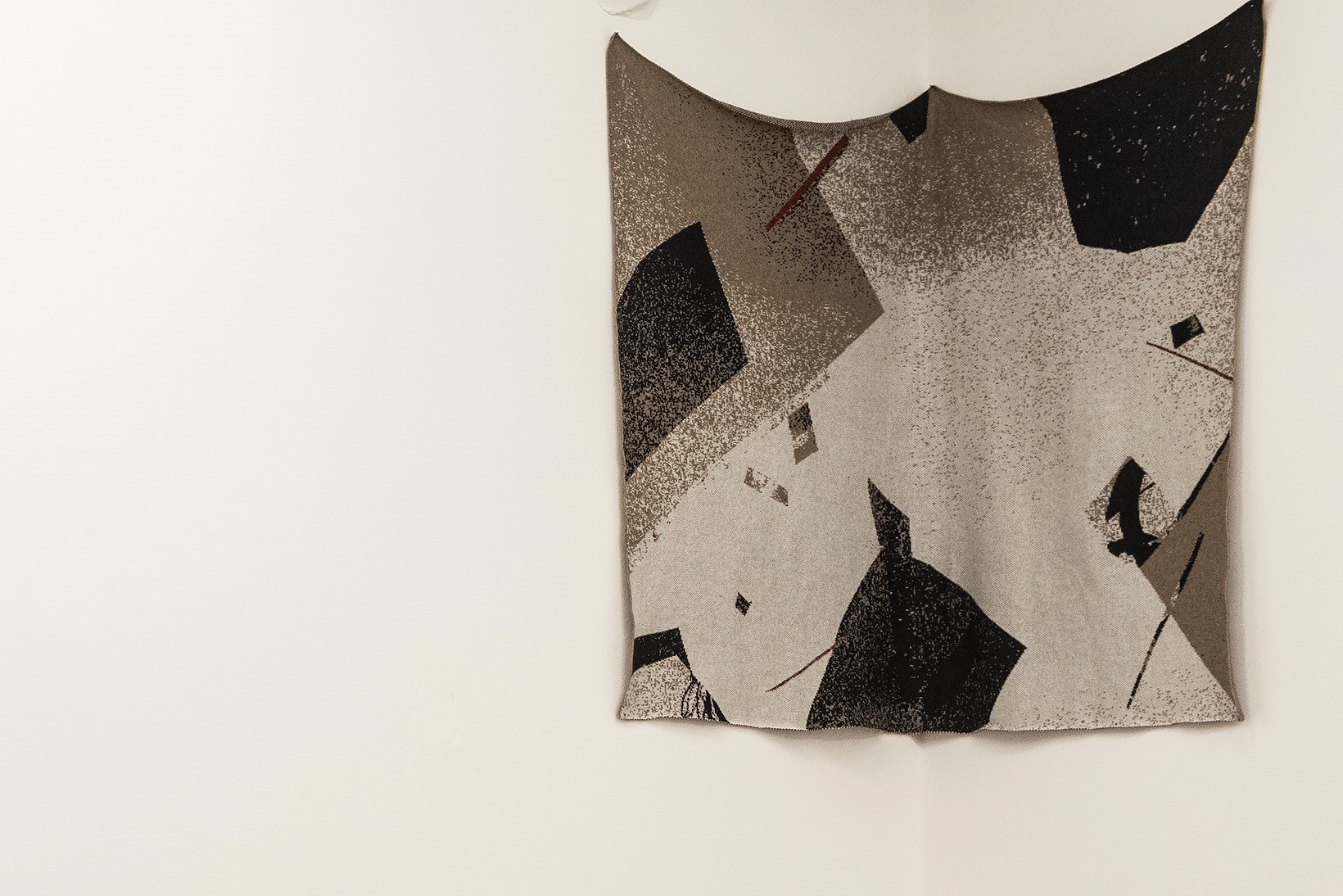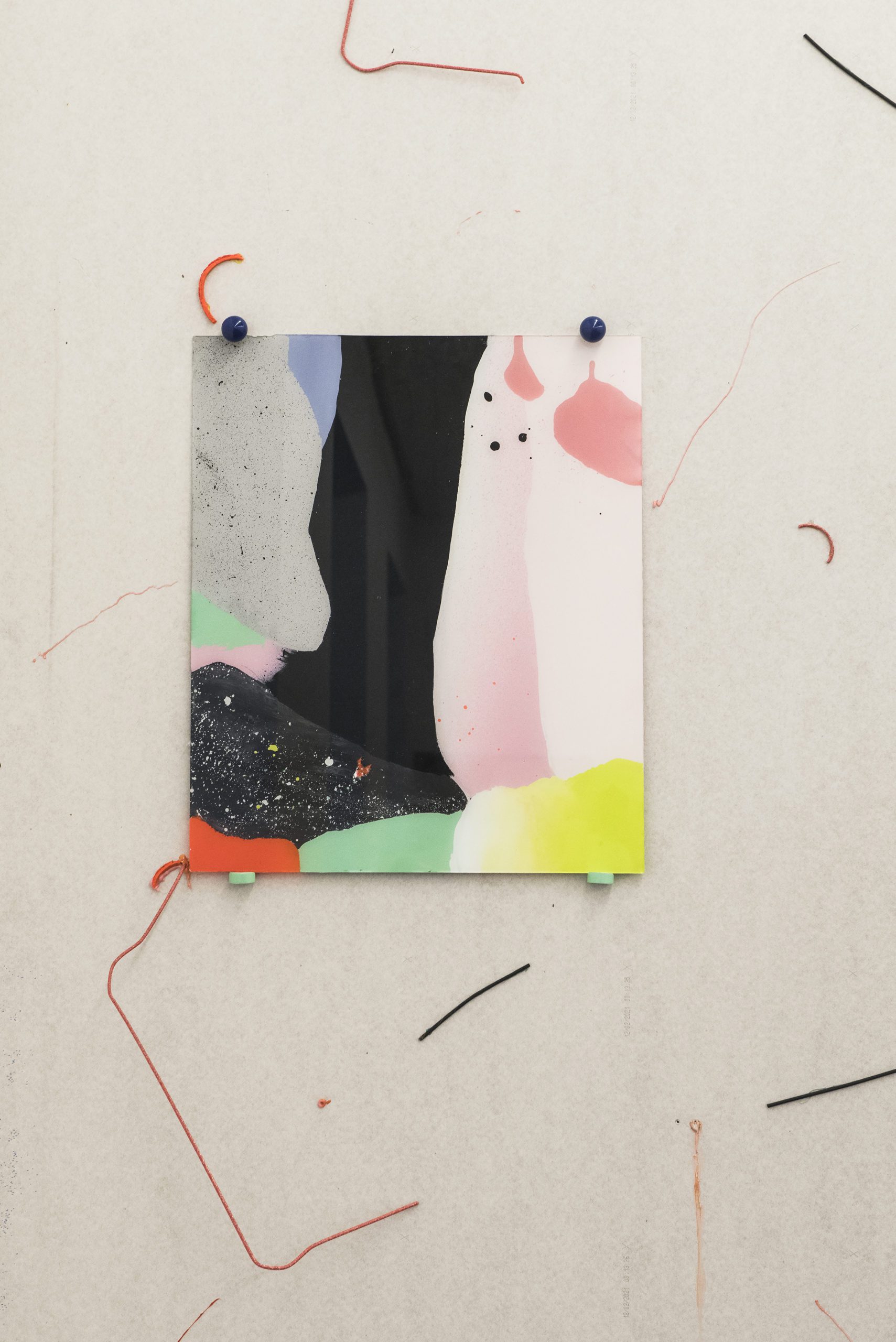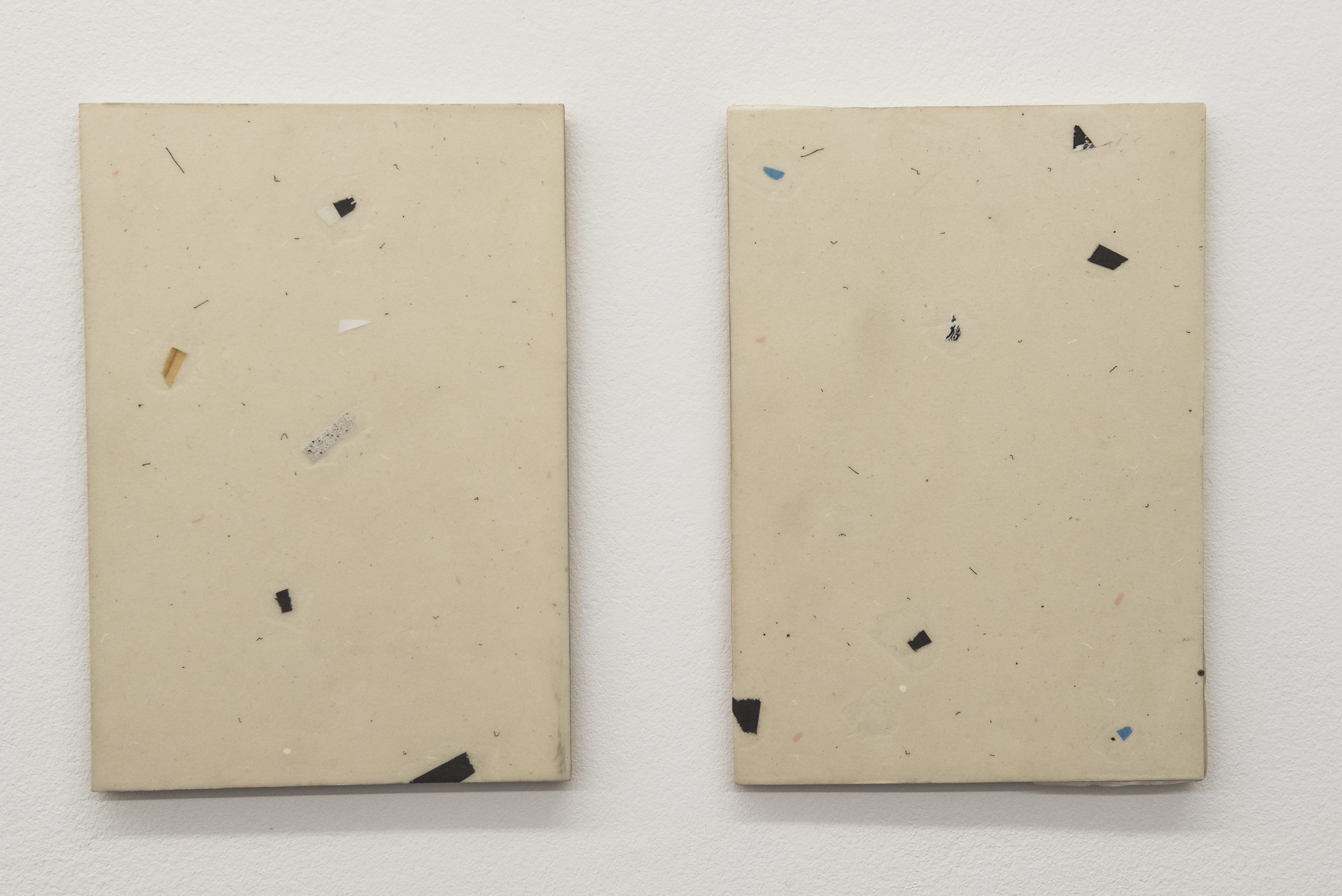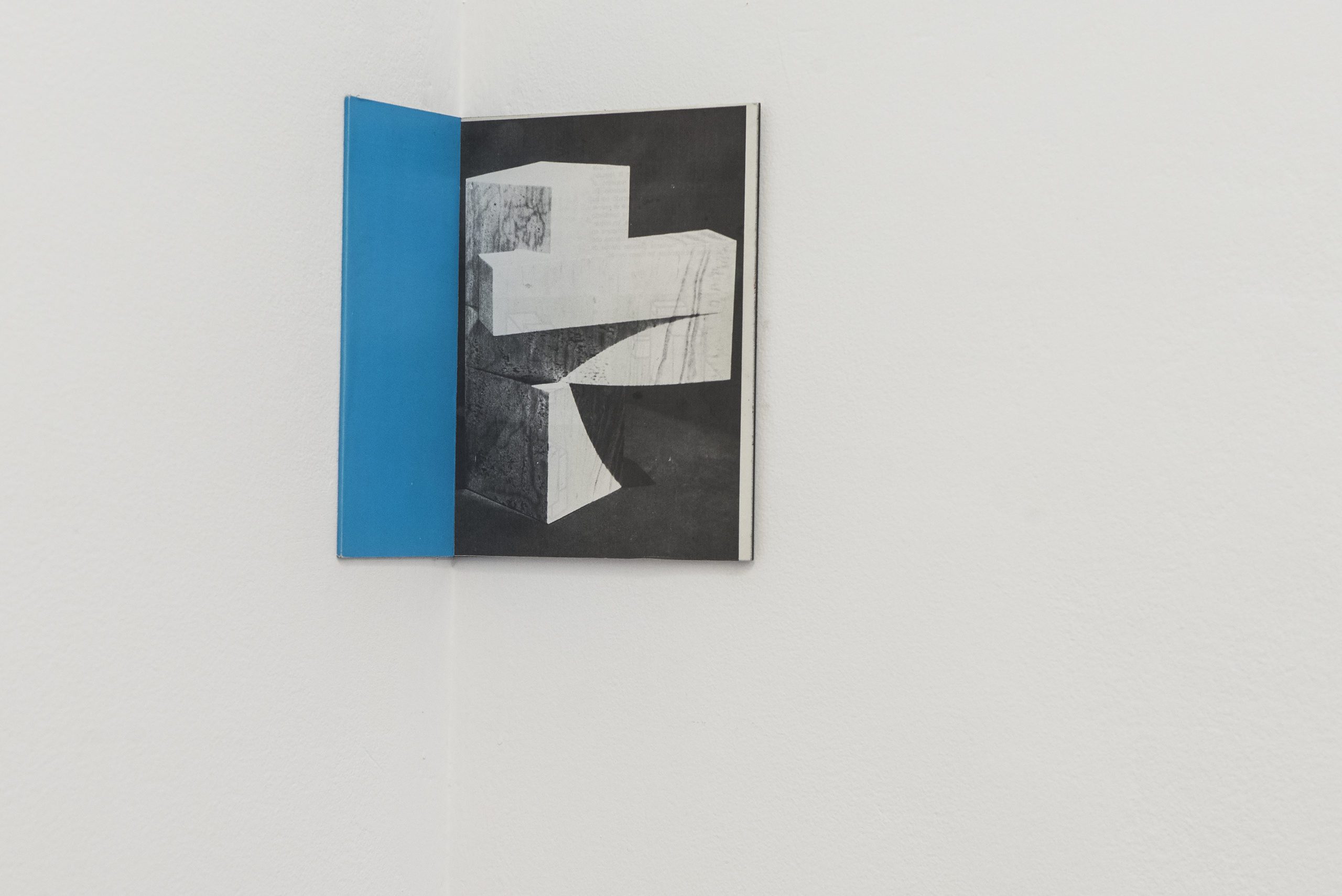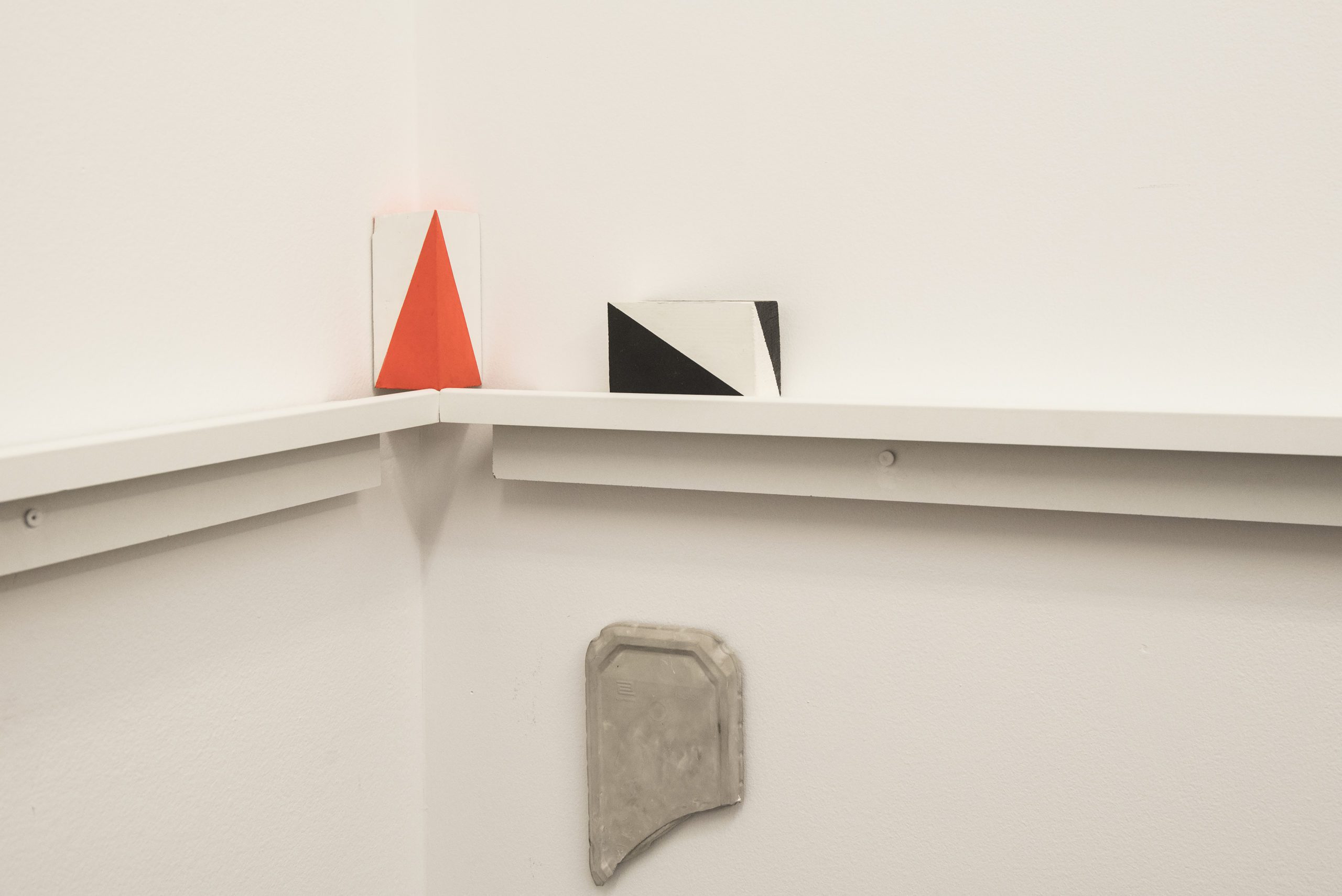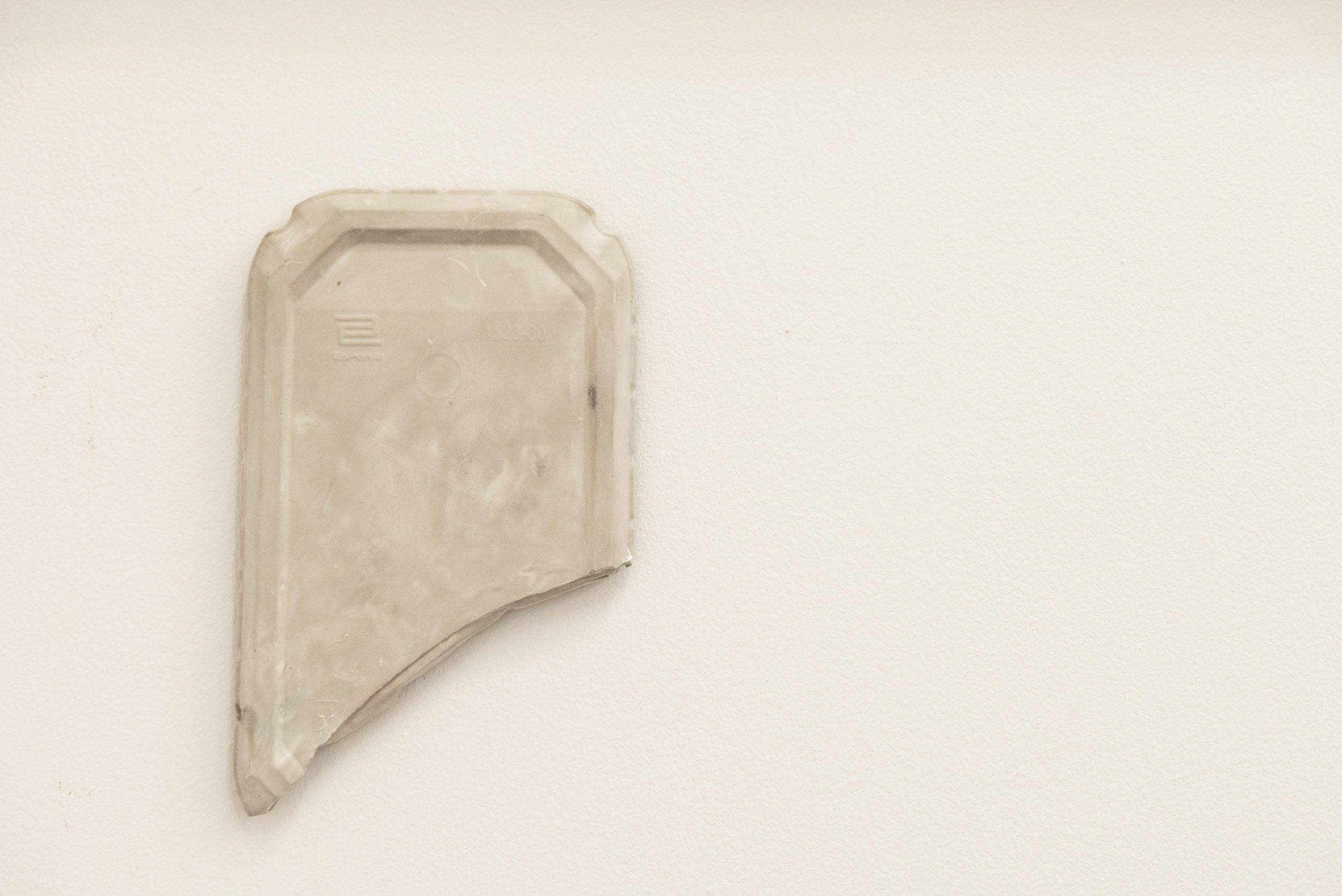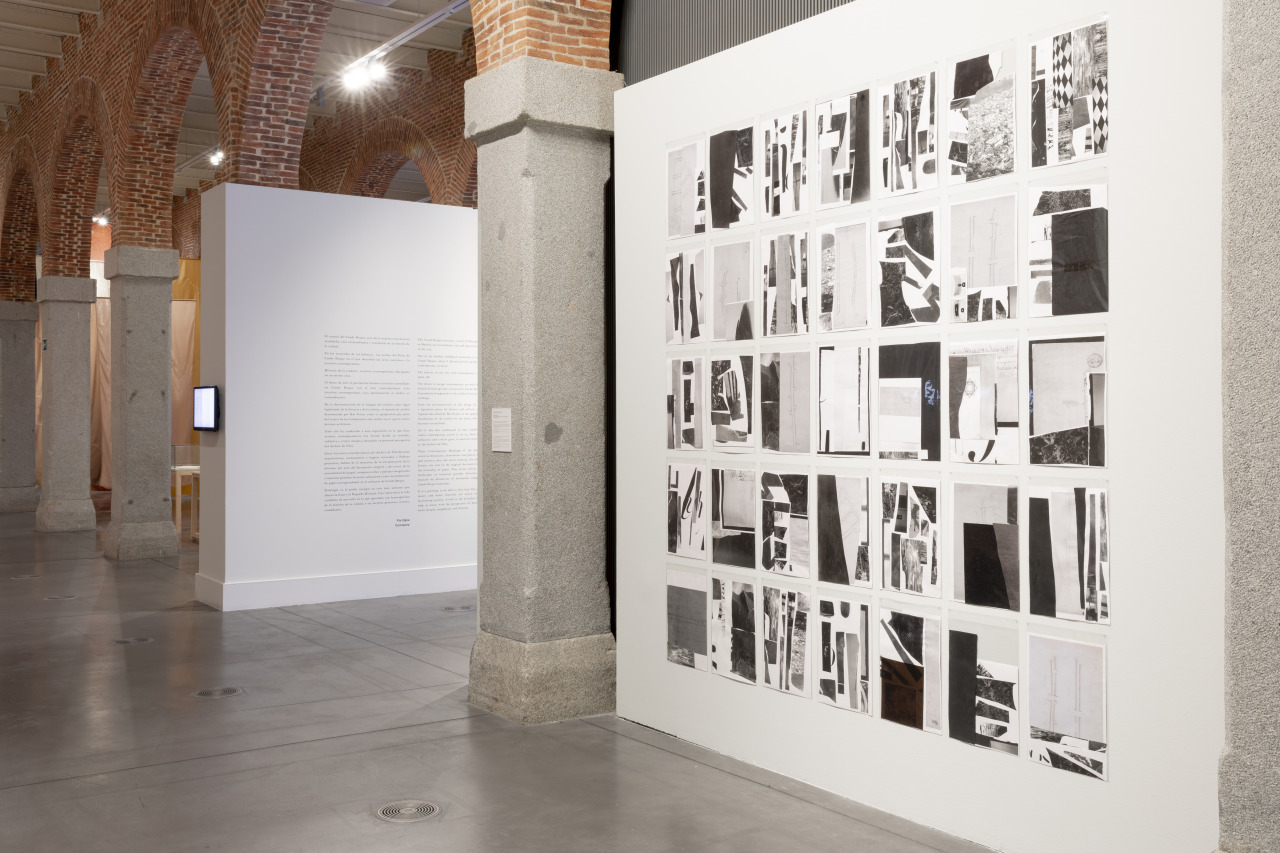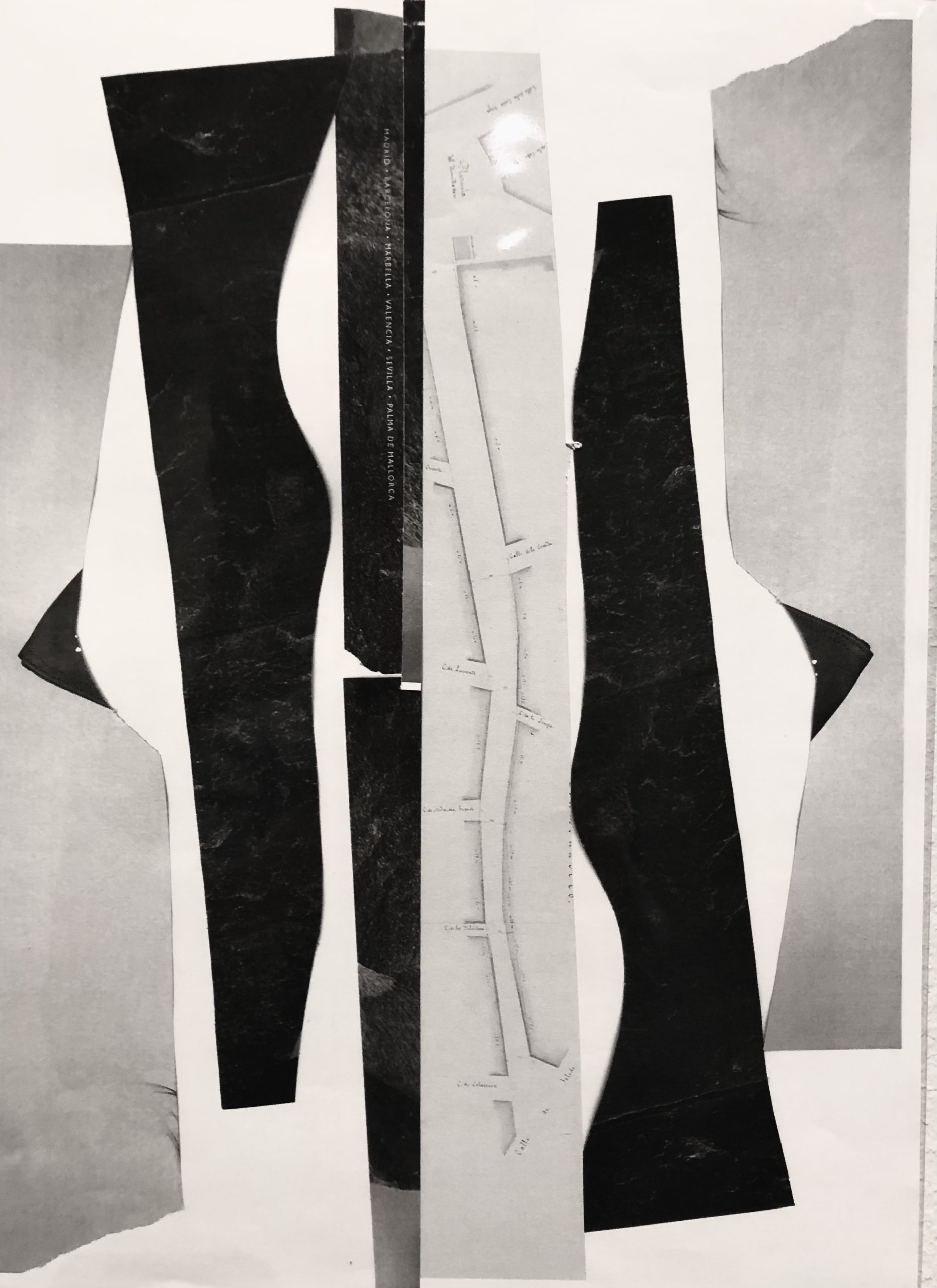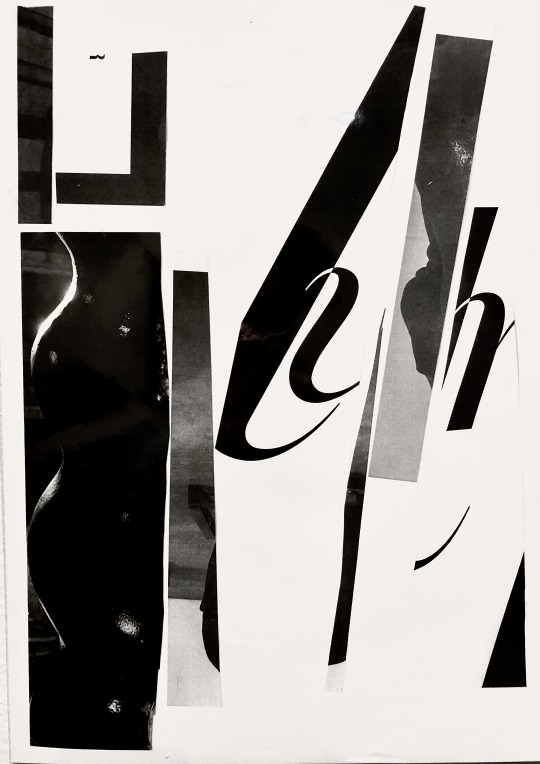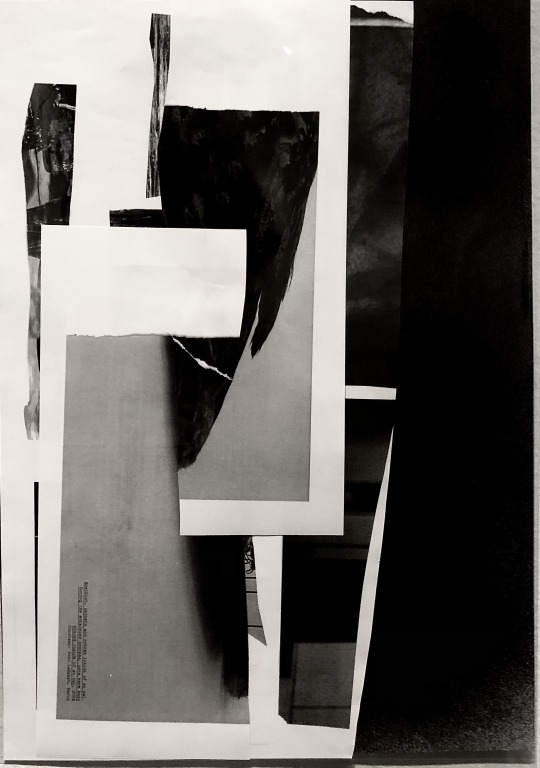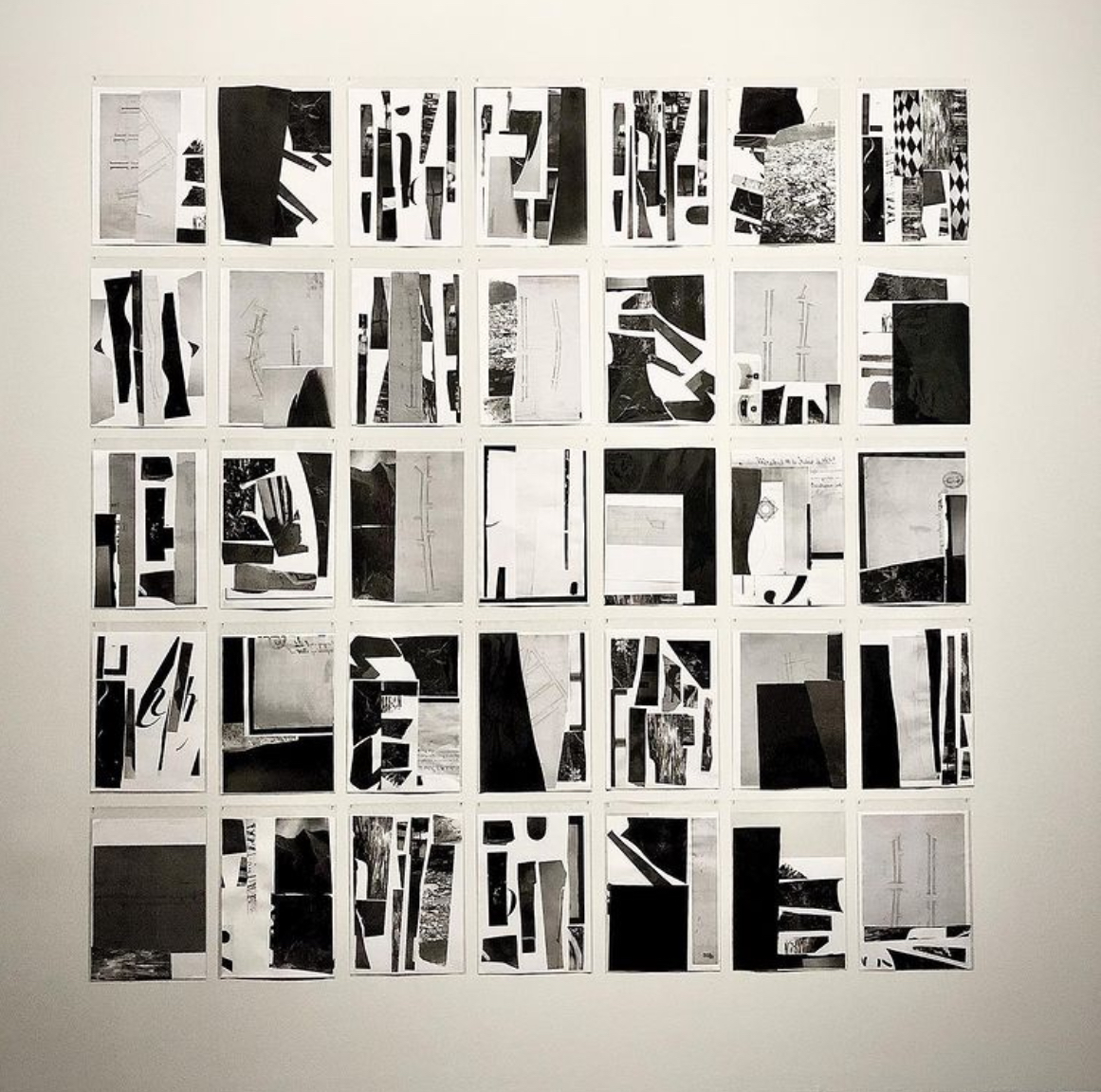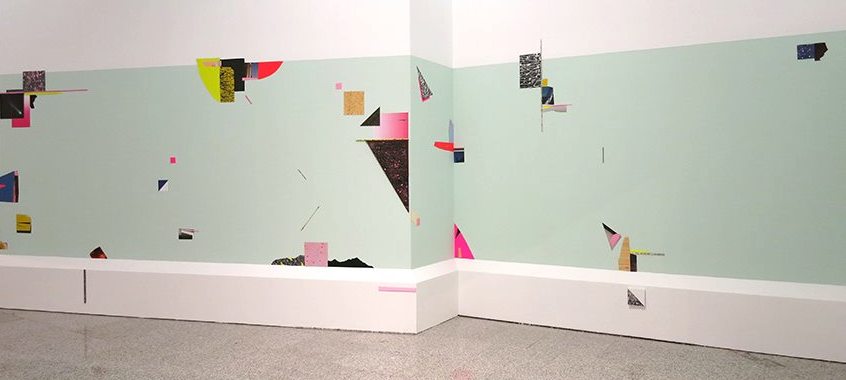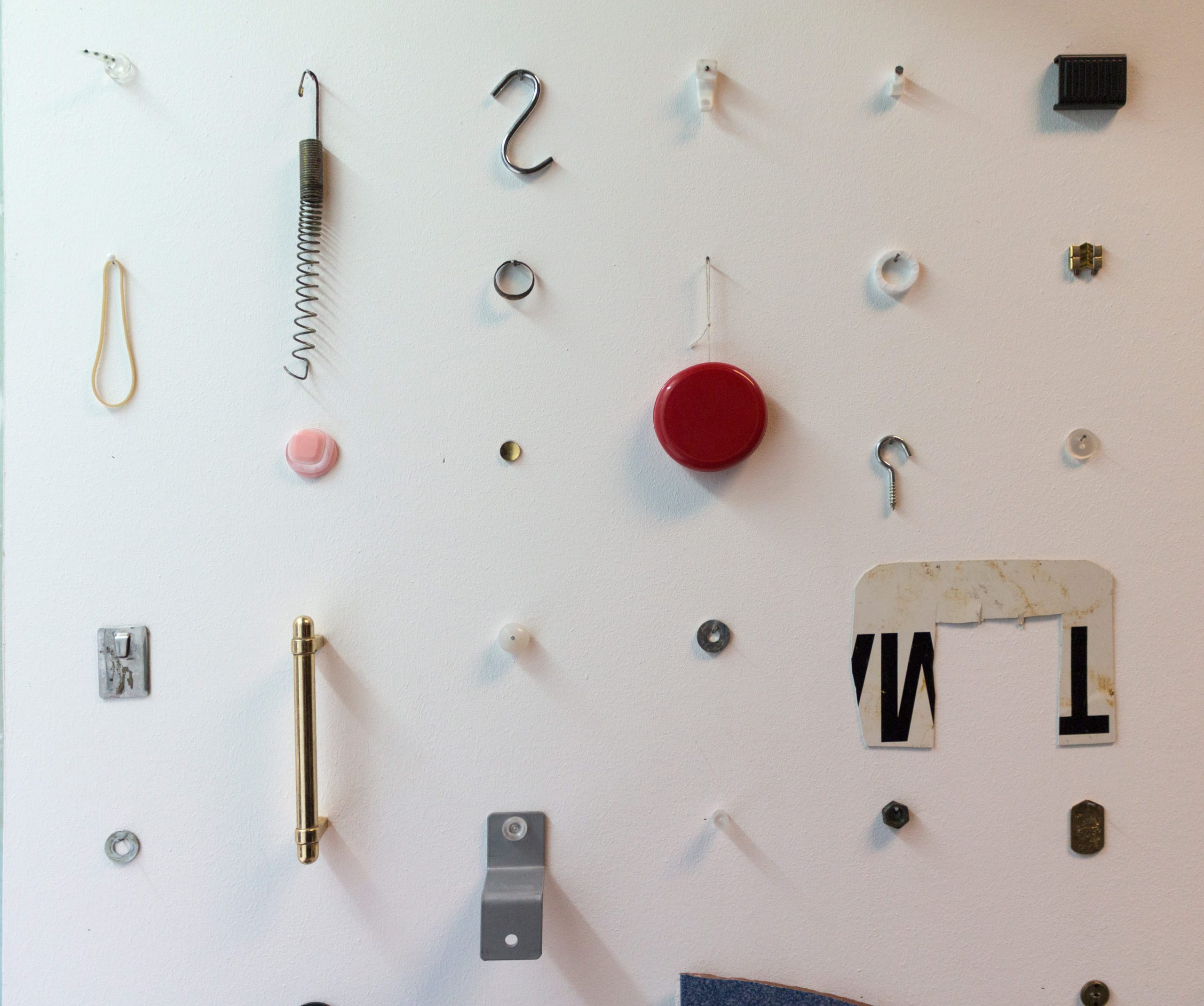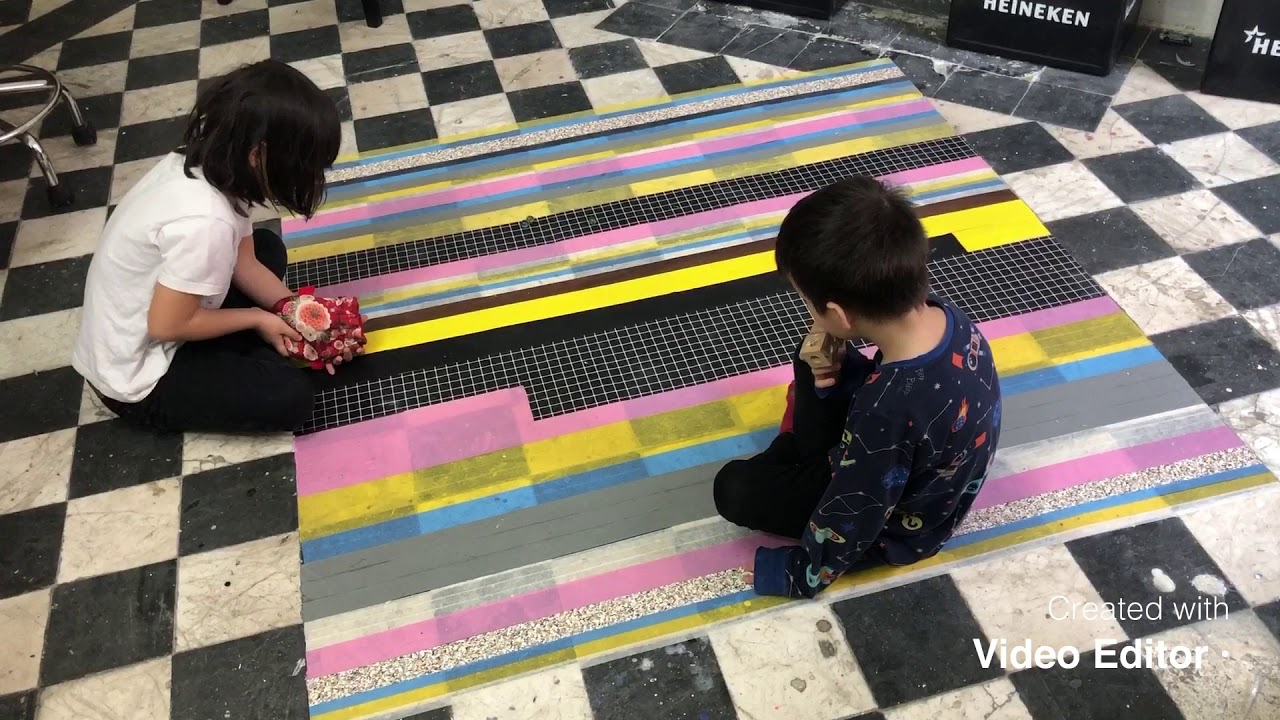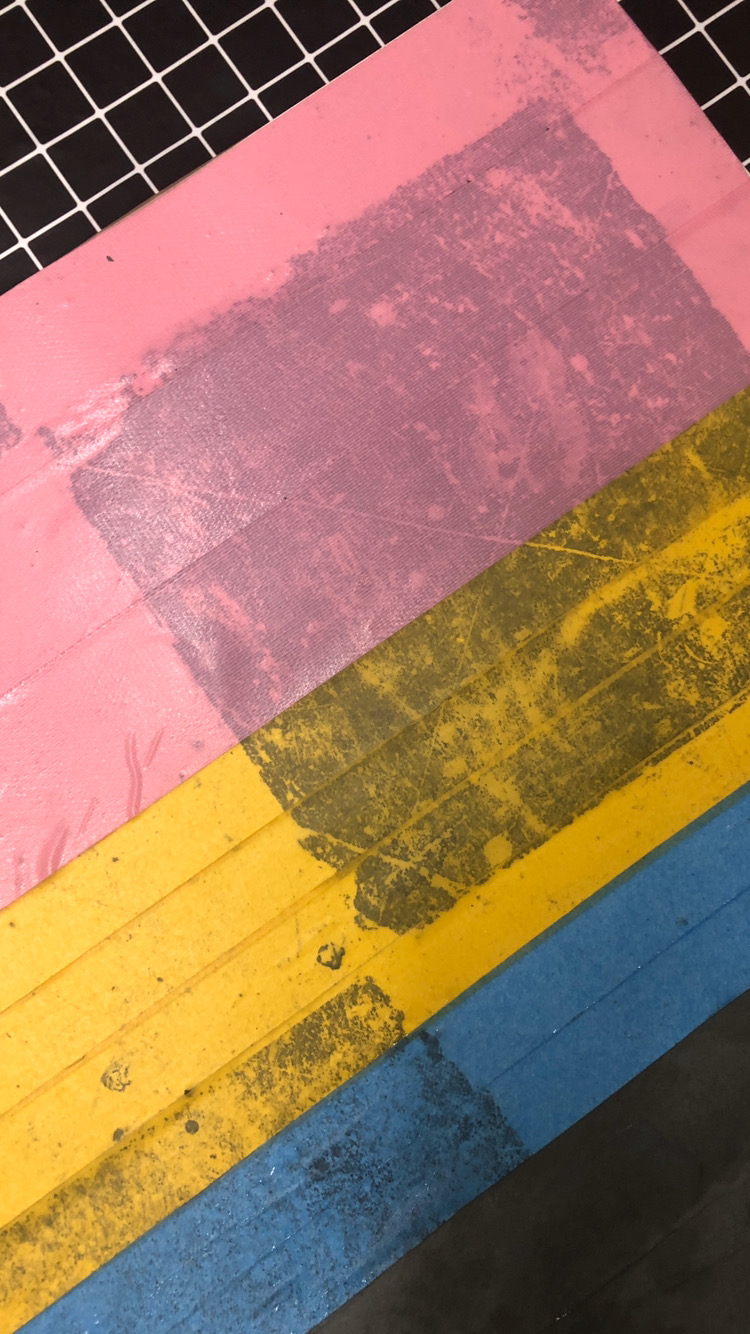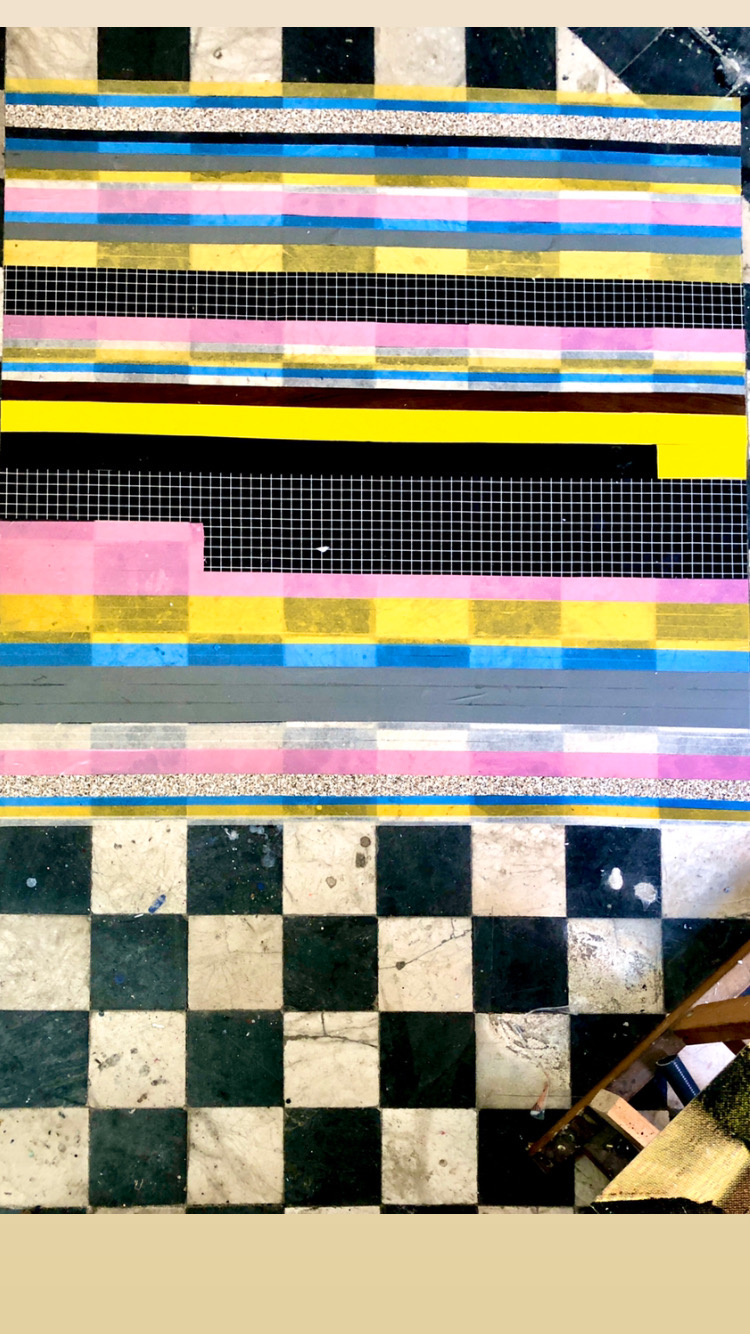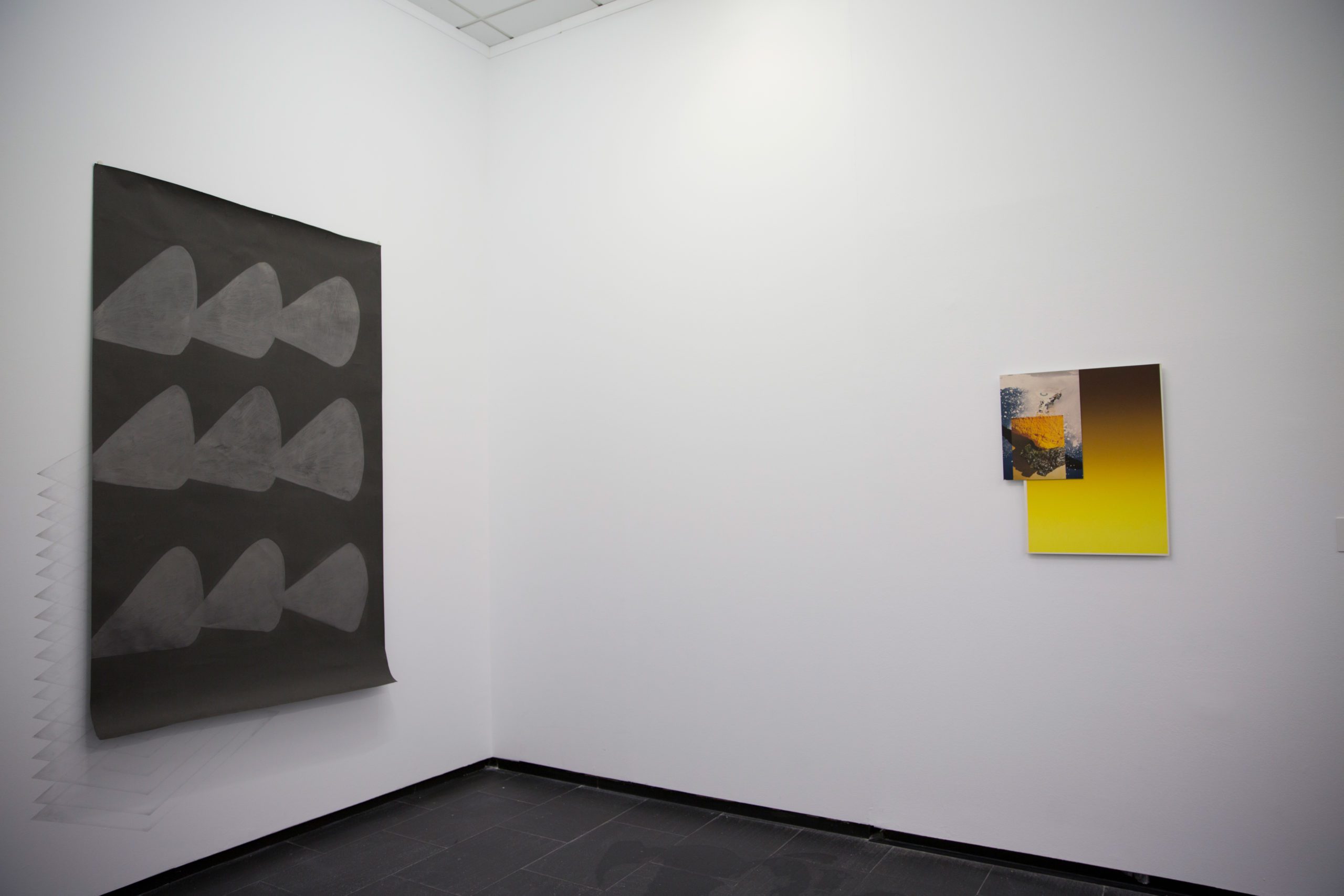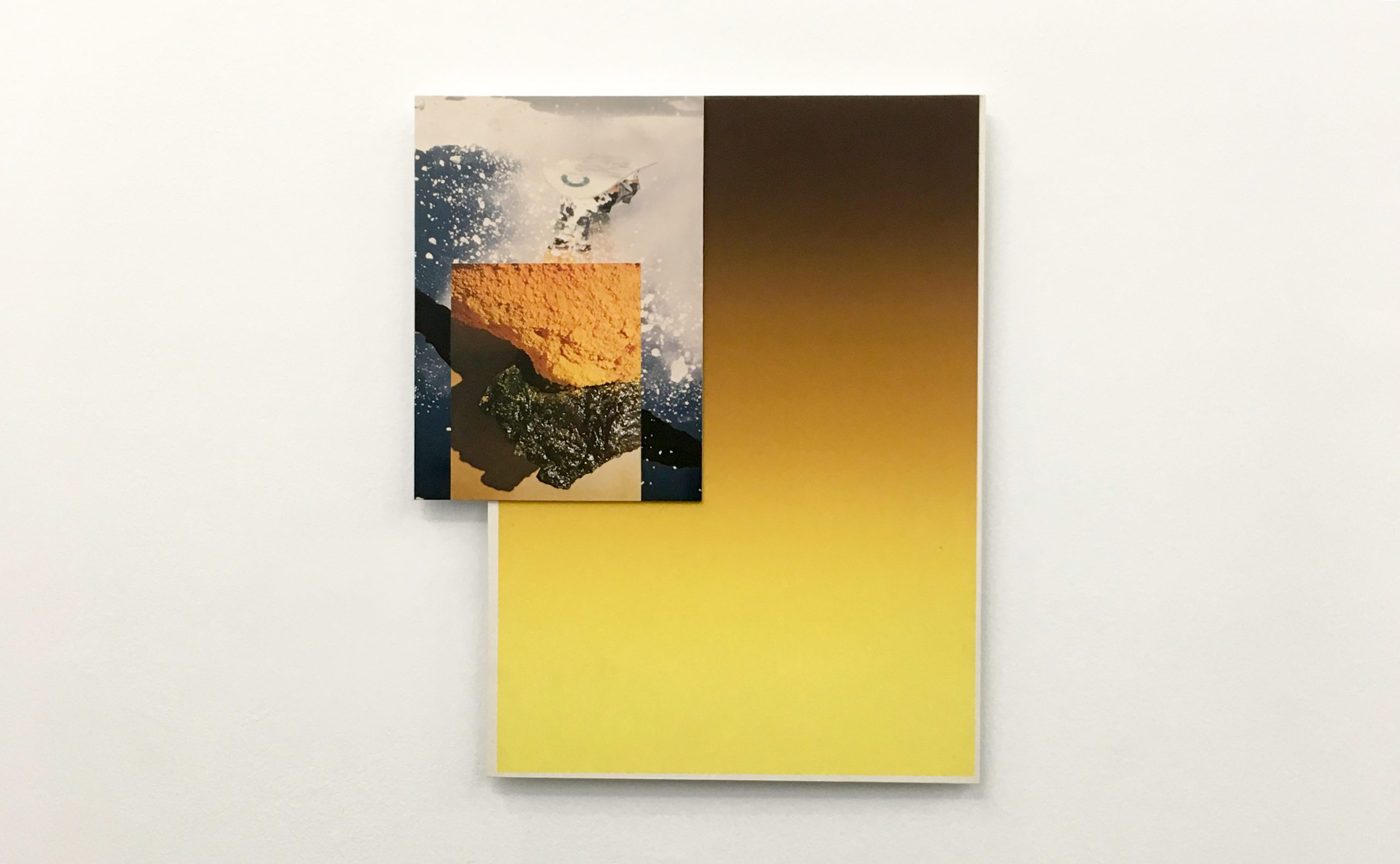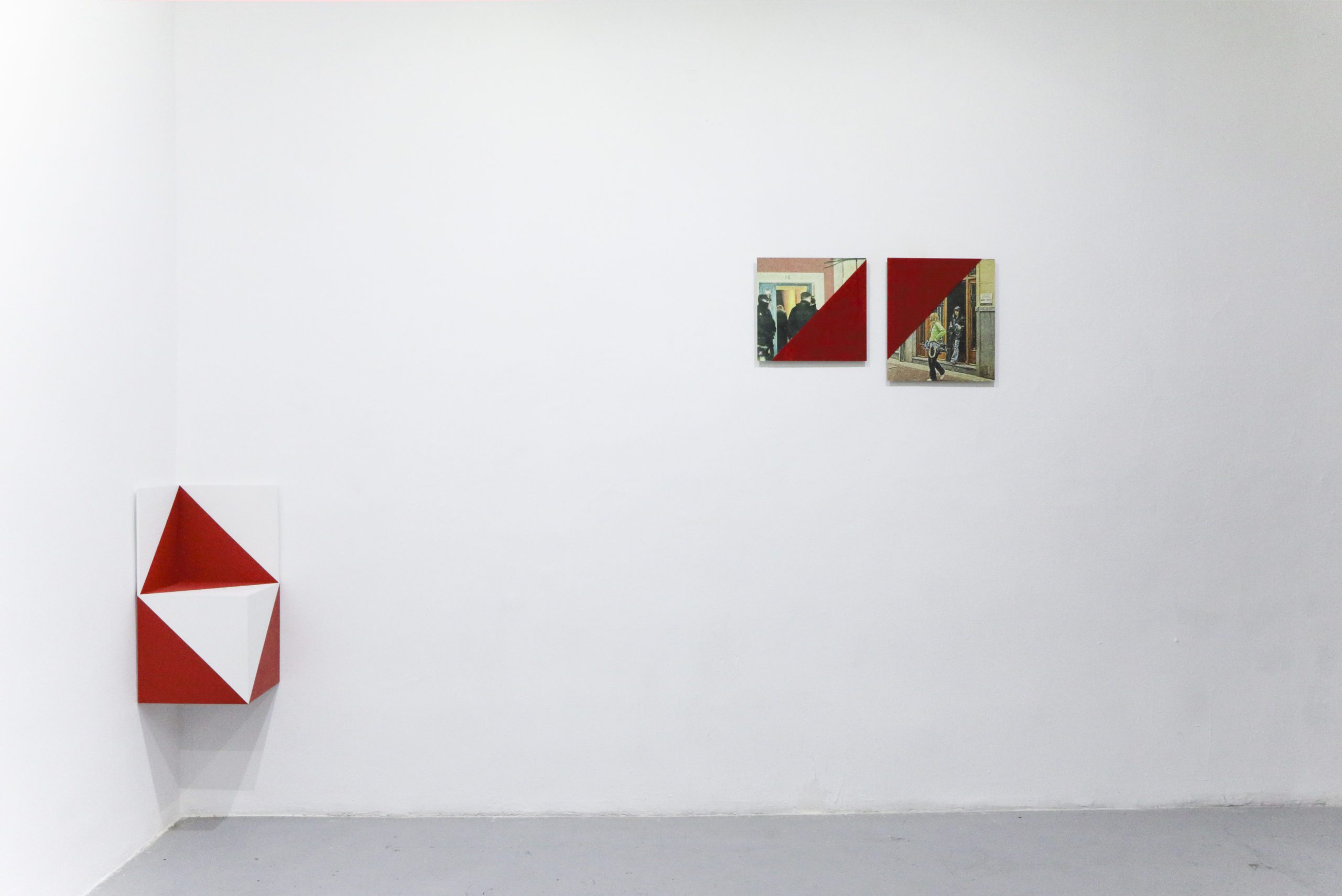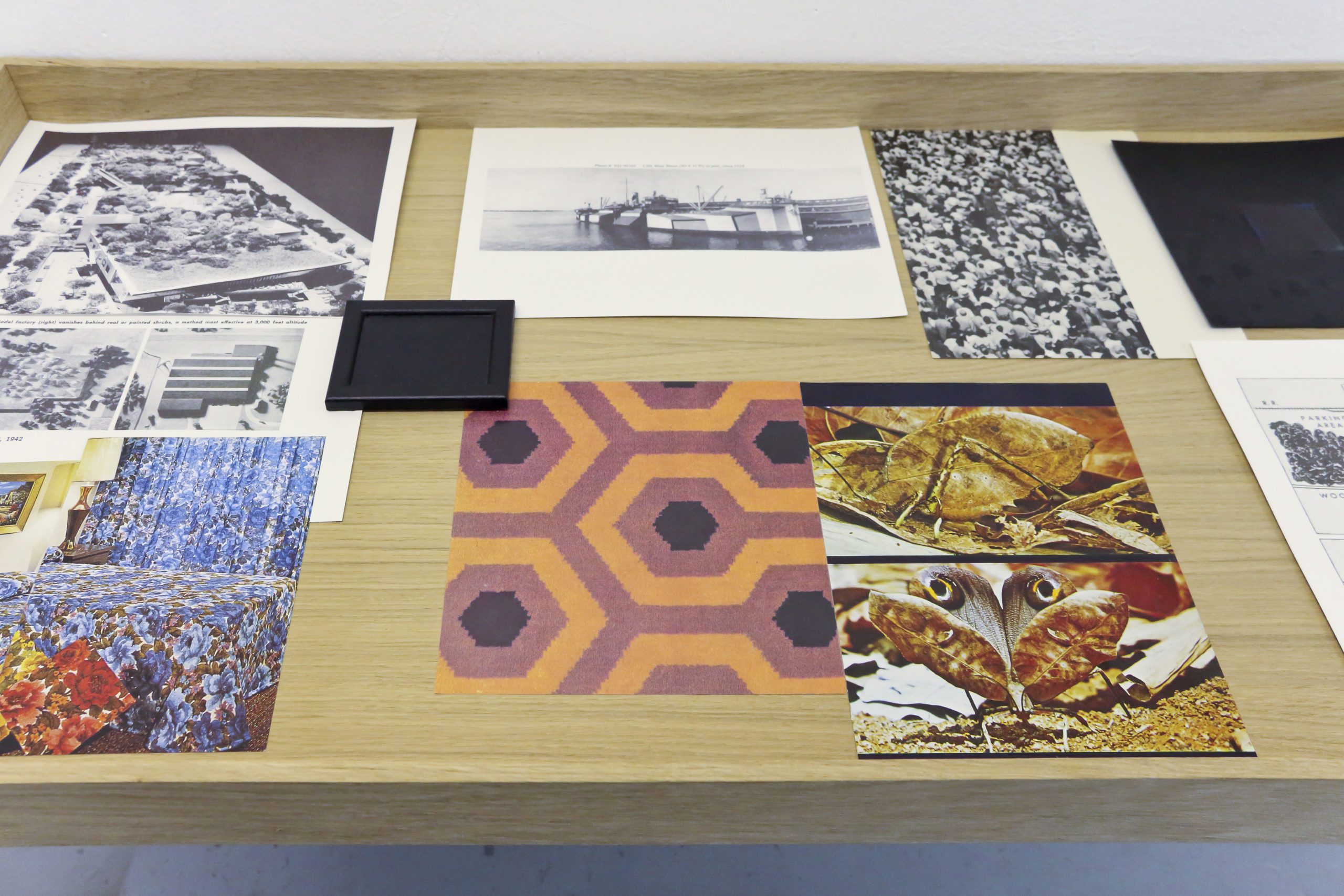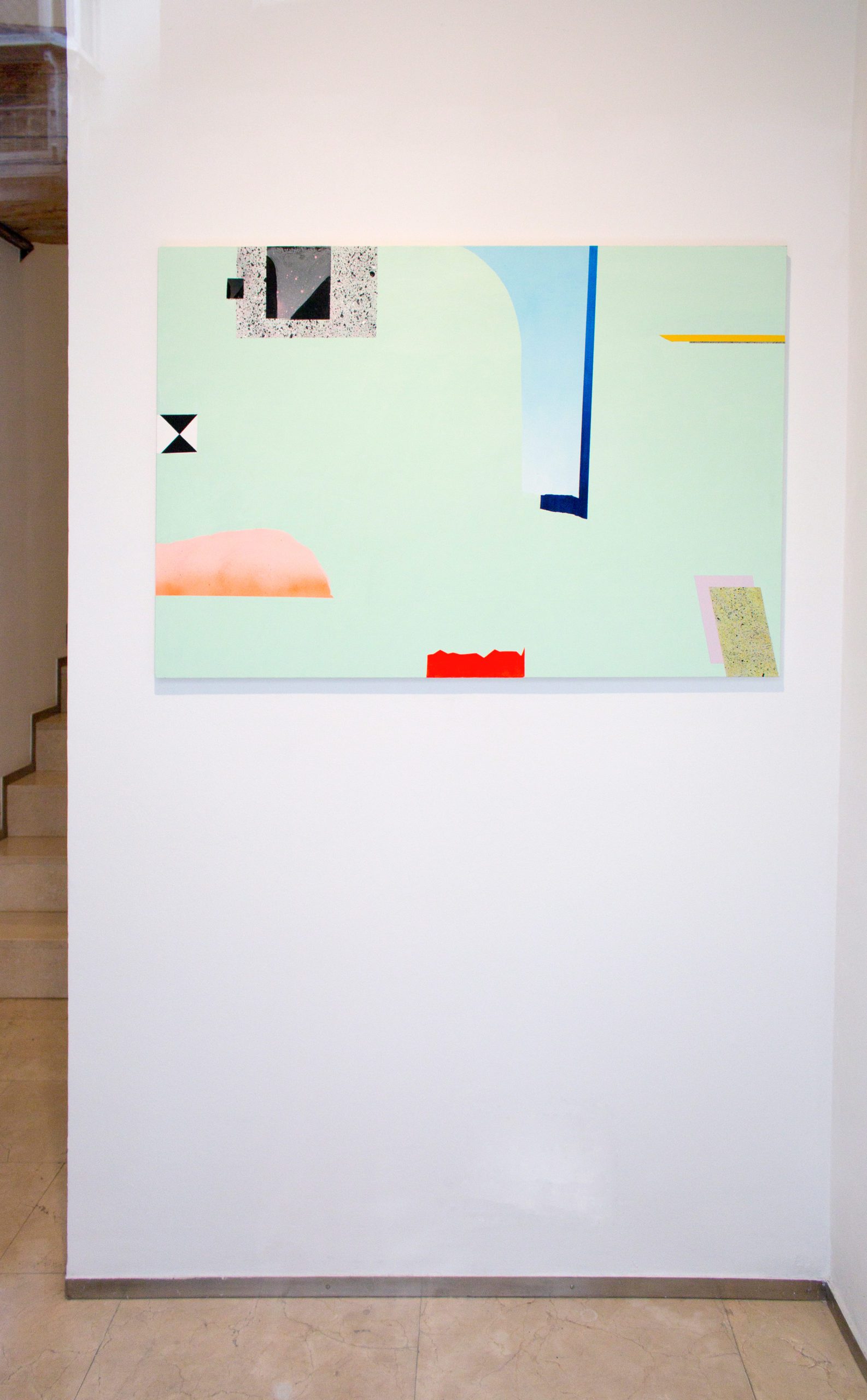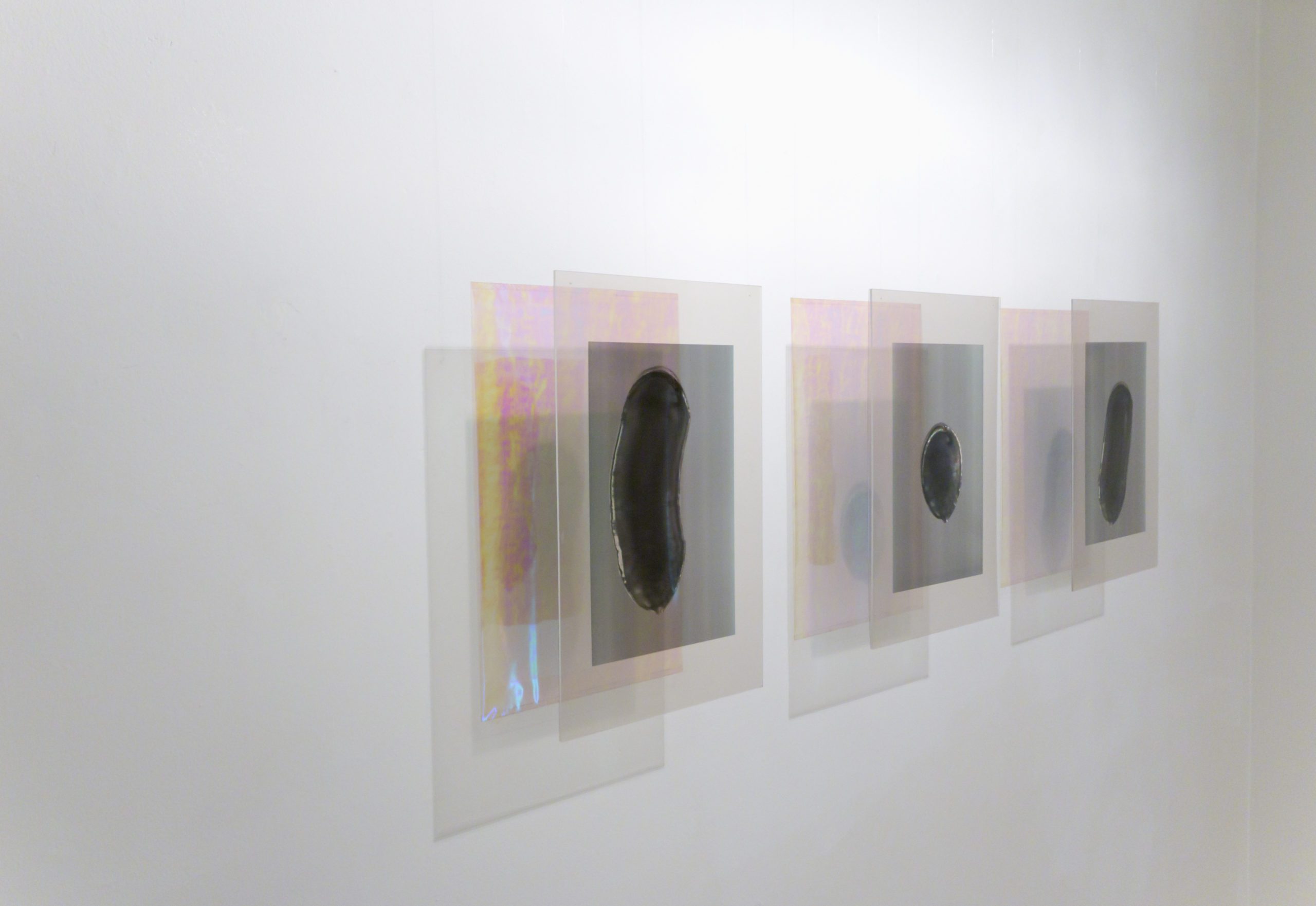ac.en
Ángela Cuadra
Spain, 1978
Ángela Cuadra
Untitled
2020
Collage
38 x 30 cm
Ángela Cuadra
Untitled
2025
Collage
27 x 22 cm
Ángela Cuadra
Untitled
2023
Collage
25 x 25 x 3,5 cm
Ángela Cuadra
Untitled (I)
2022
Ceramic and acrylic enamel on glass
52 x 52 cm
Ángela Cuadra
Untitled (II)
2022
Ceramic and acrylic enamel on glass
52 x 52 cm
Ángela Cuadra
Untitled (III)
2022
Ceramic and acrylic enamel on glass
32 x 44 cm
In my work, I carefully study materials to combine the spontaneous gesture of collage with other physical media, without betraying the praxis of any of them. My work resides on the surface—its materiality must be floating, epidermal, and contain a significant element of chance. I explore the idea of painting without painting, of circling around painting, where the act of transporting materials to the pictorial layer becomes the true protagonist.
My conceptual references are diverse, but the common thread can be summarized as a reflection on painting as a practice of camouflage.
I mainly investigate the game of veiling and unveiling, which involves adding layers, and the slow, meticulous labor of constructing surfaces. In this sense, Cubism, as a rupture with representational space and a shift toward presenting the painting itself, the collagist techniques of Dada and Surrealism, and the painting of grotesques—from Roman traditions to their revival during the Renaissance—are my main sources of inspiration. In all these approaches, space is presented as flat, fluid, and continuous. Visual elements appear stripped of perspective’s depth illusion, and the logic is one of juxtaposition, overlapping, ambiguity, or pareidolia.
Glass painting encompasses all of these elements. Glass eliminates the absorption quality of traditional pictorial surfaces and forces me to work in one or two layers at most, since the rewetting of layers can disturb the previous ones. In this sense, the process becomes a blind exercise: I work behind the visible surface, open to the surprise of how the stain or gesture will appear once the glass is flipped. I’m drawn to this process because it reverses the logic of traditional painting, generating a new dialectic between the surface of the image and its reverse.
– Ángela Cuadra
Ángela Cuadra
Untitled (IV)
2025
Ceramic and acrylic enamel on glass
30 x 30 cm
Ángela Cuadra
Untitled (V)
2025
Ceramic and acrylic enamel on glass
30 x 22 cm
Ángela Cuadra + Daisuke Kato. »Conversadeira». Campanice, Oporto. 2022
Ángela Cuadra
Untitled (VI)
2023
Ceramic and acrylic enamel on glass
32 x 20 cm
Ángela Cuadra
Untitled (VII)
2023
Ceramic and acrylic enamel on glass
29 x 16 x 4 cm
Ángela Cuadra
Evolving II
2021
Enamel and acrylic on glass
120 x 80 cm
Ángela Cuadra y Laura F. Gibellini. Interludio 2: Nunca nada parecido. NF/NIEVES FERNANDEZ, Madrid. 2021
Nunca nada parecido. Ángela Cuadra y Laura F. Gibellini. 2021
Faced with the challenge of making the invisible visible, artists Laura F. Gibellini and Ángela Cuadra delve into the mechanisms through which the hidden, faded, or intangible is constructed, developing strategies of representation for such elements. Never Anything Like It brings together recent works by both artists that deal with a subject matter which, although intelligible, is imperceptible.
These are works that translate into the visual realm what cannot be seen with an innocent eye—what we know is there, what we feel the presence of, but whose visual representation poses a significant cognitive challenge. This, without a doubt, plays a fundamental role even in the smallest daily dynamics of our current times. There is something there—ethereal, hidden, impalpable—but we know it is there.
Ángela Cuadra investigates images that revolve around concealment techniques used throughout recent history, conducting a broad phenomenological study of invisibility. Examining the tensions between the natural and the artificial, the public and the private, the whole and its parts, the essential and the superfluous, the artist uses materials loaded with historical and semantic meaning to reconvert and re-signify them. Based on collage and approached intuitively, her works form compositions in which the found materials are minimally altered, giving prominence to the forms themselves through their juxtaposition with other materials.
The particular focus on the dialogue between fragments, on the emotion that arises when finding harmonies of color, shape, or texture, brings the perception of her work closer to that of a musical composition. Creating language without literature, making music without melody, making painting without paint. Creating by building from what is already there, from what lies at the margins.
Never Anything Like It is the second edition of Interludios, a series of short-term exhibitions at NF/ NIEVES FERNÁNDEZ, aimed at creating a space of visibility for projects conceived by artists—whether or not represented by the gallery—that until now had not been realized.
Ángela Cuadra
Untitled
2021
Mixed technique on wood
120 x 80 cm
Ángela Cuadra
Untitled
2021
Acrylic on canvas
54 x 45 cm
Ángela Cuadra
Untitled
2022
Toner, acrylic, adhesive vinyl, Indian ink, and modeling paste on board
197 x 120 cm
Ángela Cuadra y Laura F. Gibellini. Interludio 2: Nunca nada parecido. NF/NIEVES FERNANDEZ, Madrid. 2021
Ángela Cuadra
Untitled
2022
Toner, acrylic, adhesive vinyl, Indian ink, and modeling paste on board
120 x 197 cm
Ángela Cuadra
Grutesco I
2021
Collage
115 x 162 cm
Ángela Cuadra
Untitled
2021
Acrylic and Indian ink on wood and collage on paper
34 x 43.5 cm
Ángela Cuadra
Untitled
2020
Enamel and acrylic on glass, painting on mirror
42 x 31 cm each [diptych]
Ángela Cuadra y Laura F. Gibellini. Interludio 2: Nunca nada parecido. NF/NIEVES FERNANDEZ, Madrid. 2021
Angela Cuadra
Untitled
2019
Collage, acrylic, and adhesive vinyl on paper
84 x 64 cm
Ángela Cuadra y Laura F. Gibellini. Interludio 2: Nunca nada parecido. NF/NIEVES FERNANDEZ, Madrid. 2021
Angela Cuadra
Tsuru Tsuru
2020
Toner, acrylic, adhesive vinyl, Indian ink, and modeling paste on board
197 x 120 cm
Ángela Cuadra y Laura F. Gibellini. Interludio 2: Nunca nada parecido. NF/NIEVES FERNANDEZ, Madrid. 2021
Angela Cuadra
Untitled
2021
Collage on paper
67 x 49 cm
Angela Cuadra
Contrasombra II
2015
Enamel on cardboard
15 x 15 x 15 cm each

Ángela Cuadra y Laura F. Gibellini. Interludio 2: Nunca nada parecido. NF/NIEVES FERNANDEZ, Madrid. 2021
Angela Cuadra
Contrasombra I
2015
Enamel on cardboard
25 x 12.5 x 12.5 cm
Ángela Cuadra
Untitled
2016
Acrylic on wood
30,5 x 25,5 cm | 24 x 20 cm [diptych]
Ángela Cuadra y Laura F. Gibellini. Interludio 2: Nunca nada parecido. NF/NIEVES FERNANDEZ, Madrid. 2021
Angela Cuadra
Untitled
2021
Jacquard fabric
85 x 107 cm
Ángela Cuadra y Laura F. Gibellini. Interludio 2: Nunca nada parecido. NF/NIEVES FERNANDEZ, Madrid. 2021
Ángela Cuadra
Untitled
2020
Indian ink, acrylic, collage, and synthetic varnish on wood
29,5 x 20,5 cm each [diptych]
Ángela Cuadra
Untitled
2016
Collage on Dibond
21 x 25 cm
Ángela Cuadra
Contrasombra III
2015
Enamel on wood
Ángela Cuadra. Alineaciones. 2020
Collage sobre papel.
Exhibition El Arca. Lecturas contemporáneas sobre el Archivo de la Villa.
Curated by Pía Ojea
CC Conde Duque, Madrid. 2020-2021
The exhibition El Arca. Contemporary Readings of the Archivo de Villa aims to serve as a bridge between the past of Madrid’s history, preserved in the valuable collections of the Archivo de Villa, and the contemporary experience of living in, moving through, and understanding the city of Madrid.
This project is an invitation to twelve contemporary Spanish artists and/or Madrid-based artists to work with the bibliographic collections of the Archivo de Villa. The goal of this research is to culminate in an exhibition at Conde Duque, where a dialogue is created between the bibliographic documents selected by the artists and the works they have specifically produced for the occasion. These works will be exhibited alongside the original documents that served as their inspiration.
About the work:
The city we inhabit as our portrait. Sidewalks, doorways, corners, alignments— the city leaves its mark on us, and we leave ours on it.
Alineaciones (Alignments) is an intimate portrait from a public perspective. Based on digitized documents of street alignments in the Palacio district, housed in the Archivo de Villa, Ángela Cuadra creates a self-portrait of her life within the streets of Madrid, her city.
The Archivo de Villa and the artist’s personal archive merge, just as the public and the private intertwine in the city’s streets. Small stories, fragments of encapsulated paper, experiences of moving through a city, of a life.
Ángela Cuadra. Casa, studio, calle, barrio. CentroCentro, Madrid. 2016
Ángela Cuadra. Casa, studio, calle, barrio. CentroCentro, Madrid. 2016
Ángela Cuadra. Hurón. Alimentación 30, Madrid. 2015
Ángela Cuadra. Hurón. Alimentación 30, Madrid. 2015
Ángela Cuadra. Canicas. Exposición ‘Un metro y medio’. CA2M, Madrid.
Curators: Manuel Segade and Tania Pardo Pérez
In these strange times of complete uncertainty, we inhabit a world where the future will no longer be as we once imagined it. If contemporary art museums are dedicated to working on the future of art and anticipating the artistic forms to come, we understand that it is our duty to begin constructing new ways of understanding our work, promoting new relationships of solidarity, and inventing different forms of institutional care.
CA2M has launched the project #Unmetroymedio, in which artists residing in the Madrid region will explain their work from their confinement. Using whatever household resources they have at their disposal, they will communicate their ideas through texts and images or simply share how they are feeling and the possible futures they face. The project’s title refers to the social distance that must be maintained between people during quarantine—a rule that, whether through windows, balconies, or screens, has led to the invention of new forms of emotional closeness.
All this material, released every three days on our social media, will gradually form a simple, minimal, and reflective archive. At the same time, it will serve as a record of the need to communicate through screens, of domestic spaces transformed into makeshift workspaces, of creative production in times of crisis, of digital networks of affection, and of collective ways of confronting fear. Each contribution will expand the museum’s documentary collection to capture the historical, political, and social moment we are living in.
#Unmetroymedio is an inherently open project that will evolve alongside the unfolding uncertainty of these days and the longed-for moment of reconstruction.
Ángela Cuadra. Querer parecer noche.
CA2M
Curators: Beatriz Alonso and Carlos Fernández Pello
2018
Ángela Cuadra. Shadows conceal and reveal. Exposición individual en Espacio Cruce, Madrid. Febrero de 2015
Orbital Projects. Ángela Cuadra. Josédelafuente + Cruce.
Curator: Alexis Callado Estefanía
2015
In this exhibition, Ángela Cuadra explores the relationship between conceptual trends in art history and certain critical aspects developed in her artistic practice, which focus their aesthetic attention on the structural importance of social forces in contemporary society.
The status and treatment of the image have become key aspects in provoking states of confusion and exclusion within aesthetics and politics. The artist is aware that the function of art has been reduced by ruthless training—within a framework of speculative visual exercises—aiming to banish its sense of belonging to society and its role as a mediator in public discourse, either through total absorption or unlimited transparency. This exhibition, therefore, opens up a reflection on how the spectacle of war and the specter of fear have been camouflaged in nearly all aspects of daily life and how they are wielded to justify new forms of authoritarian control, disguised as “expert” knowledge, at the expense of public debate and participation.
While History, with a capital «H,» appears as a chronological succession of events, manifesting through multiple references to precise dates and occurrences, the web of concealed realities is fragmented, opaque, full of deceptive ellipses and suspensions of all change, of returns and repetitions. Any critical visual approach to these amalgamations generates multiple ways of assessing our responsibility in the face of the vertigo of the inevitable. Perhaps there are still remnants of a lucid contemplation that persist in the art system, barely surviving the ongoing radical secularization of modernity. These remnants allow for a certain distance from the fusion and evolution of the circulation of images and hegemonic powers.
It is necessary to examine those old forms of camouflage to determine whether they can be repurposed to find new ways to integrate and transcend failed modernity. A new cycle of fractures and experiences could begin, rescuing humanity—not just from a world saturated with automated-image-obfuscation but, above all, from superficiality. Modernity has always secretly pointed—through its ideological masks and Dalinian psychological camouflage—toward a complete externalization of self-care, avoiding the subject’s engagement with an aesthetics of existence and thus preventing imagination from approaching the space of the other. The collapse of the depths of being beneath the immovable tombstone of «objective knowledge,» along with the global expansion of the market, has led worldviews toward an aggressive and warlike logic, camouflaged by the emerging society of spectacle and artistic avant-gardes.
Human beings have become technological entities par excellence, with every technical advancement being applied primarily to themselves and driven by insatiable self-interest. This translates into the limitless exploitation of finite resources—where the neoliberal logic of wealth acquisition steamrolls over sustainability concerns—trapping humanity in an endless labyrinth with the idea of progress as its mantra. The modern state, dictated by a general history of systemic intensifications, may only be able to conceal and/or camouflage these «excesses» of unlimited progress with natural landscapes painted over nuclear plants, as Ángela Cuadra aptly alludes to in one of her works.
Battleships designed in cubist forms now sail through all the oceans of this great transformation, where citizens have become consumer-slaves hungry for disposable symbols. Camouflage has now returned to the world of art to reveal how the relations of production and consumption are pushing the planet toward a grave ecological crisis with insurmountable limits. The exhibition explores various aspects of recent history in which people are reduced to mere cogs in an enlightened, controlling, and voracious machine, where aesthetic experience has been replaced by a forgotten form of taxidermy.
Ángela Cuadra calls for a reconsideration of creativity’s role in reinterpreting specific historical visions, reclaiming an imaginary constitution through aesthetic practices that promote a critical revision of inherited simulacra. She proposes a resistance to the unfortunate devaluation of thought, as she considers artistic creation to be a radical act of commitment to imagination.
Alexis Callado Estefanía
Ángela Cuadra. The Stuff That Surrounds us. Galería Josedelafuente. 2016
What is truly contemporary is untimely. Those silent seekers who break the supposedly ordered chronology imposed incessantly by institutions manage to be out of time. Reorganizing the fragments we have at hand, interrogating them, and widening the cracks of time allows us to challenge the stagnant reading of what surrounds us. In The Stuff That Surrounds Us, Ángela Cuadra and Eva Fàbregas present a floating exhibition, like a ship launched into adventure, shedding what is stagnant to delve into an aporia structured around scattered works, as if they were remnants of a controlled explosion.
«Do not forget that you are the core of a rupture. God has separated from himself to let us speak, so that we may feel estranged and question ourselves. And he has done so not by speaking, but by remaining silent, letting silence interrupt his voice and his signs, allowing the Tablets to break,» wrote Jacques Derrida in Writing and Difference, likening the fragmentation of the text to the rupture of an original order. From these broken pieces, «poetry springs forth, and the right to speech takes root. The adventure of the text begins again, like weeds, outside the Law.»
The small panels installed by Ángela Cuadra present bands of black and yellow juxtaposed with an accumulation of tiny, erratic drops in vibrant colors. Controlled, almost restrained gestures ornament the surface of these paintings, like a wall «riddled with erratic stains [that] produces a deflagration.» Erratic stains which, in their praise of anachronism, Didi-Huberman identified in the frescoes that Fra Angelico painted in the Convent of San Marco in Florence in the 15th century. When brought into dialogue with Pollock’s dripping, they unexpectedly illuminate other possible narratives and perceptions. The fruitful anachronism emerges precisely in the experience of temporal disjunction.
Once the apparent confusion of the first glance is overcome, when we observe the random heterogeneity that surrounds us, the experience of distancing may arise— as if looking through a kaleidoscope of impure times, capable of revealing, through their misalignment, the hidden potential of signs and their histories. “One who truly belongs to their time, who is truly contemporary, is someone who does not completely coincide with it nor conforms to its demands. It is precisely for this reason that, through this detour and anachronism, they are more capable than others of perceiving and grasping their time,” writes Giorgio Agamben when reflecting on what it means to be contemporary.
(…)
In Ángela Cuadra’s new canvases, a green hue—one that has little to do with nature and instead decisively evokes the world of design—asserts itself at the center of the composition. However, it merely waits to abdicate in favor of the decorative elements already surrounding it, quietly belligerent, closing in to dethrone it. The artist organizes her paintings from the edges; rather than rushing into a predetermined compositional scheme, she joyfully surrenders to one part of the canvas, only to later step back and fully immerse herself in another fragment.
Details emerge that could belong to remnants of walls or floors, fragments of a grotesque in ruins, half-hidden beneath vegetation. These remnants, alongside the artificial green, form a kind of swing for the viewer, a montage of singularities that moves back and forth— we are in the middle of a deflagration!
(…)
The two artists of The Stuff That Surrounds Us organize their works from the corners, venturing onto formal and conceptual scaffolding that recalls the grotesque—like wild weeds that, through ornamentation, end up dominating the space. Through strategies of temporal suspension, they encircle and captivate the viewer who approaches the exhibition. From the periphery to the center, from void to surface, the paintings, sculptures, and photographs of this project advance like a snail carrying its heterogeneous fragments on its back. Nestled within its shell is the full force of a collision of times—times that, because they are untimely, always “just before” or “shortly after,” remain unpredictable. Like whispered words emerging from intimacy, they release a subjectivity that, through successive displacements, offers the viewer a new experience.
Text for the exhibition ‘The Stuff That Surrounds Us’
Ángela Cuadra and Eva Fábregas
Curator: Francesco Giaveri
Galería José de la Fuente, Santander
Ángela Cuadra
Solo exhibitions
2021
INTERLUDIO 2: NUNCA NADA PARECIDO, with Ángela Cuadra and Laura F. Gibellini, NF/NIEVES FERNÁNDEZ, Madrid
2016
Hurón, Proyecto Alimentación 30, Madrid
No sé qué hay en mi fogata, INVITED Program, Homesession, Barcelona
The Stuff That Surrounds Us, JosédelaFuente, Santander
2015
Shadows Conceals and Reveals, Espacio Cruce, Madrid
2014
Family Utopia, Artesantander, JosédelaFuente, Santander
Outdoor Living, Galería Nuble, Santander
2013
Trotzdem [A pesar de todo], La Eriza, Madrid
Construir Paisaje I: Las Afinidades Electivas, Galería Nuble, Santander
2012
Open Studio, Madrid
2010
Orders, Espacio F, Madrid
Le plus belle du monde, Espacio Frágil, Madrid
2006
Survival, curated by Amparo Lozano, Centro de Arte Joven, Madrid
Group exhibitions (selection)
2025
Omnímoda. La fotografía como display, MUCAC La Coracha, Málaga
2023
Todo lo demás, CentroCentro Cibeles, Madrid
2022
Conversadeira, Campanice, Porto, Portugal
2021
Biennal d’Art Diputació de Tarragona, Museu d’Art Modern (MAMT), Tarragona
Dialecto, Centro de Arte Dos de Mayo (CA2M), Madrid
Nudo Nido, Centro de Arte Joven, Madrid
Nunca Nada Parecido, NF/NIEVES FERNÁNDEZ, Madrid
XIV Premio de Artes Plásticas ‘La Rural’, Centro Cultural Hospital de Santiago, Jaén
2020
El arca. Lecturas contemporáneas del Archivo de la Villa, Centro Cultural Conde Duque, Madrid
Un metro y medio, CA2M, Móstoles
2018
Querer parecer noche, CA2M, Móstoles
Lo digerido, Espacio Dörffi, Santa Cruz de Tenerife
2016
Casa, estudio, calle, barrio, curated by Virginia Torrente, CentroCentro, Madrid
Paperworks, curated by Mónica Álvarez Careaga, Today Museum, Beijing
Aire y tiempo: la danza de las multiplicidades, curated by Sur Noir, Sala Amadís, Madrid
50 negros, Misha Bies Golas, Joseph Renau Exhibition Hall, UPV, Valencia
Getxoarte 2016, Contemporary Practices Salon, Getxo
IV Convocatoria Mardel de Pintura, Centro del Carmen, Valencia
The Stuff That Surrounds Us, JosédelaFuente, Santander
2015
Alimentación 30. Archivo 2014–2015, Cruce Arte y Pensamiento Contemporáneo, Madrid
Todo está muy caro. Declaraciones del mercado, with Antonio Caro, Espacio Trapézio, Madrid
2014
Fugir para lado algum, curated by Ángel Calvo Ulloa, Maus Hábitos, Porto
Los agricultores. Recolectar y/o manipular, Sant Andreu Contemporani, Barcelona
Drawing by Numbers, curated by Andrea Pacheco, Fundación Cultural de Providencia
I Certamen de Ayuda a la Creación Ciudad de Tudela, Fundación María Forcada, Tudela
XXIII Premio de Obra Gráfica Máximo Ramos, Centro Torrente Ballester, Ferrol
IV Premio Arte Internacional Artejoven 14, Fundación María José Jové, A Coruña
Misha Bies Golas, 27 negros, CGAC, Santiago de Compostela
2013
In Situ, Espacio OTR, Madrid
Password: Printmaking, traveling show: MGLC (Ljubljana), FMC (Kasterlee), MCG (Krakow), Fundación CIEC (Betanzos), MMSU (Rijeka), TPT (Tallinn)
Paisajismo Craneoencefálico, curated by Daniel Silvo, Espacio Valverde, Jugada a 3 Bandas 2013, Madrid
NEWS, EVENT & FRIENDS – Homenaje a Walter Hopps, curated by Tania Pardo and Guillermo Espinosa, La New Gallery, Madrid
Me, Myself and I, IV Drawing Prize Pilar y Andrés Centenera Jaraba, curated by Susana Bañuelos, Sala de la Lonja, Madrid
2012
XXIII Circuitos de Artes Plásticas, curated by Mariano Mayer, Sala de Arte Joven, Madrid
Una historia vintage, curated by Daniel Silvo, Madrid
En el 3º, Felipa Manuela Artist Residency, curated by Susana Blas, Festival Miradas de Mujeres, Madrid
Presupuesto 6 euros / 6 Euro Budget, Supermarket Art Fair, Stockholm
2010
La gesta imposible, curated by David Armengol, La Noche en Blanco, Madrid
Presupuesto 6 euros / 6 Euro Budget, curated by Cabello/Carceller, Off Limits, Madrid
Sobreestructuras, curated by Marlon de Azambuja, Espacio OTR, Madrid
2008
Ruidocracia Festival, Madrid
Líneas de Mira, curated by Amparo Lozano, CAAM, Las Palmas de Gran Canaria
2007
Planes futuros. Arte español de los 2000, curated by María de Corral, Baluarte, Pamplona
Circuitos de Artes Plásticas, curated by Lorena Martínez de Corral, Centro de Arte Joven, Madrid
2006
Muestra de Arte INJUVE, Círculo de Bellas Artes, Madrid
II Festival de Arte Experimental Decibelio, Madrid
2005
Mirador.05, Berzosa de Lozoya, Madrid
Interiores, Galería Oliva Arauna, Madrid
Awards
2021
Honorable Mention, Biennal d’Art Diputació de Tarragona, MAMT, Tarragona
Contemporary Art Creation Grant, Community of Madrid
2020
SOS Art and Culture Grants, VEGAP Foundation, Madrid
Extraordinary Art Acquisition Commission, Community of Madrid
2018
Contemporary Art Creation Grant, City of Madrid
2014
VI International Art Prize, Fundación María José Jové, A Coruña
2013
Interferencias 2013, Galería Nuble, Santander
2012
XXIII Circuitos de Artes Plásticas, Madrid
Visual Arts Production Grant, Community of Madrid
2010
Contemporary Art Creation Grant, Matadero Madrid
Collections
Centro de Arte Dos de Mayo (CA2M) and the Contemporary Art Collection of the Community of Madrid, Móstoles
Fundación Canaria para el Desarrollo de la Pintura (FCDP), Las Palmas de Gran Canaria
Fundación María José Jové, A Coruña
DKV Collection, Zaragoza
Press
2016 – ABC Cultural – Ángela Cuadra: un »Salón» en el que aprovechar (…)




